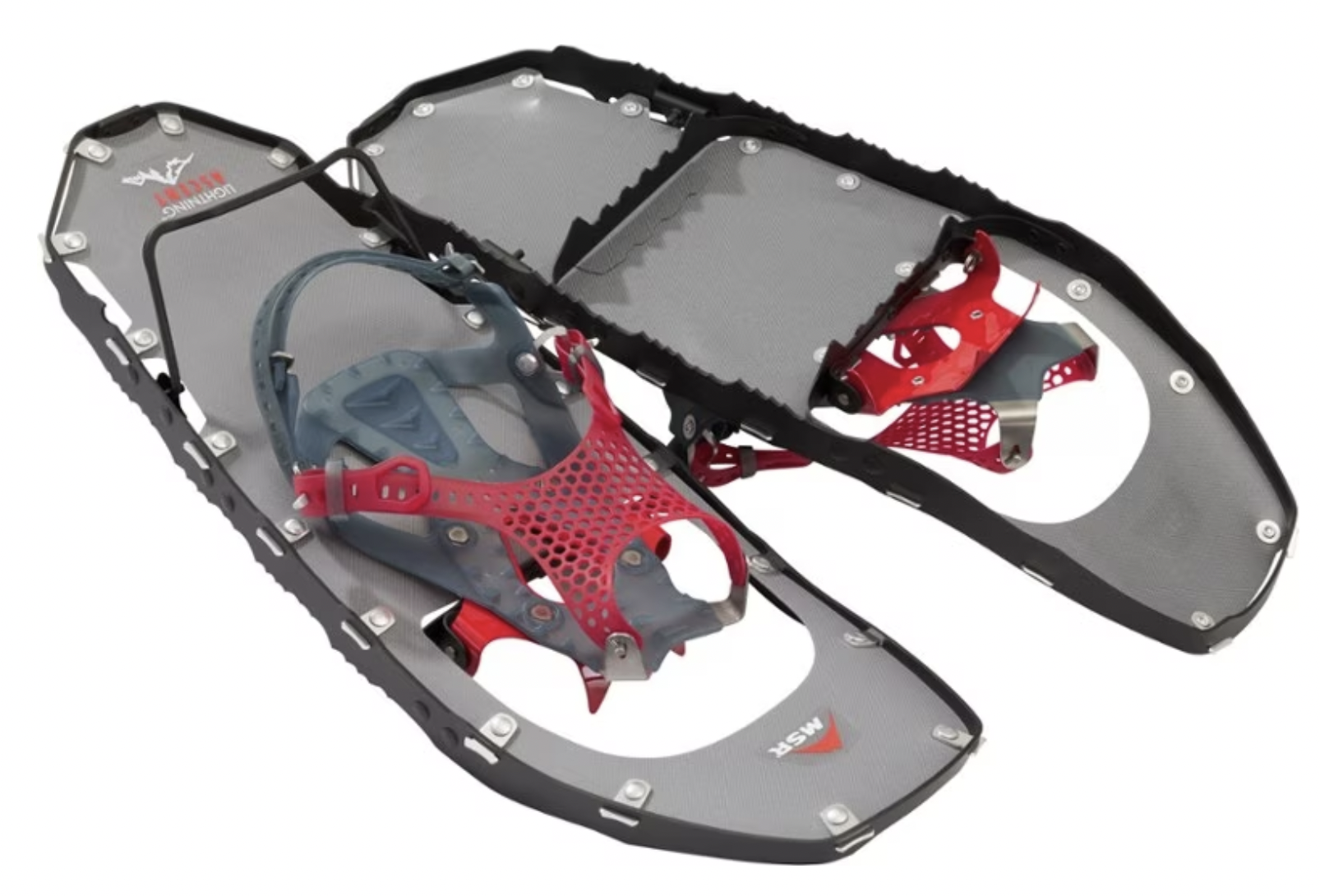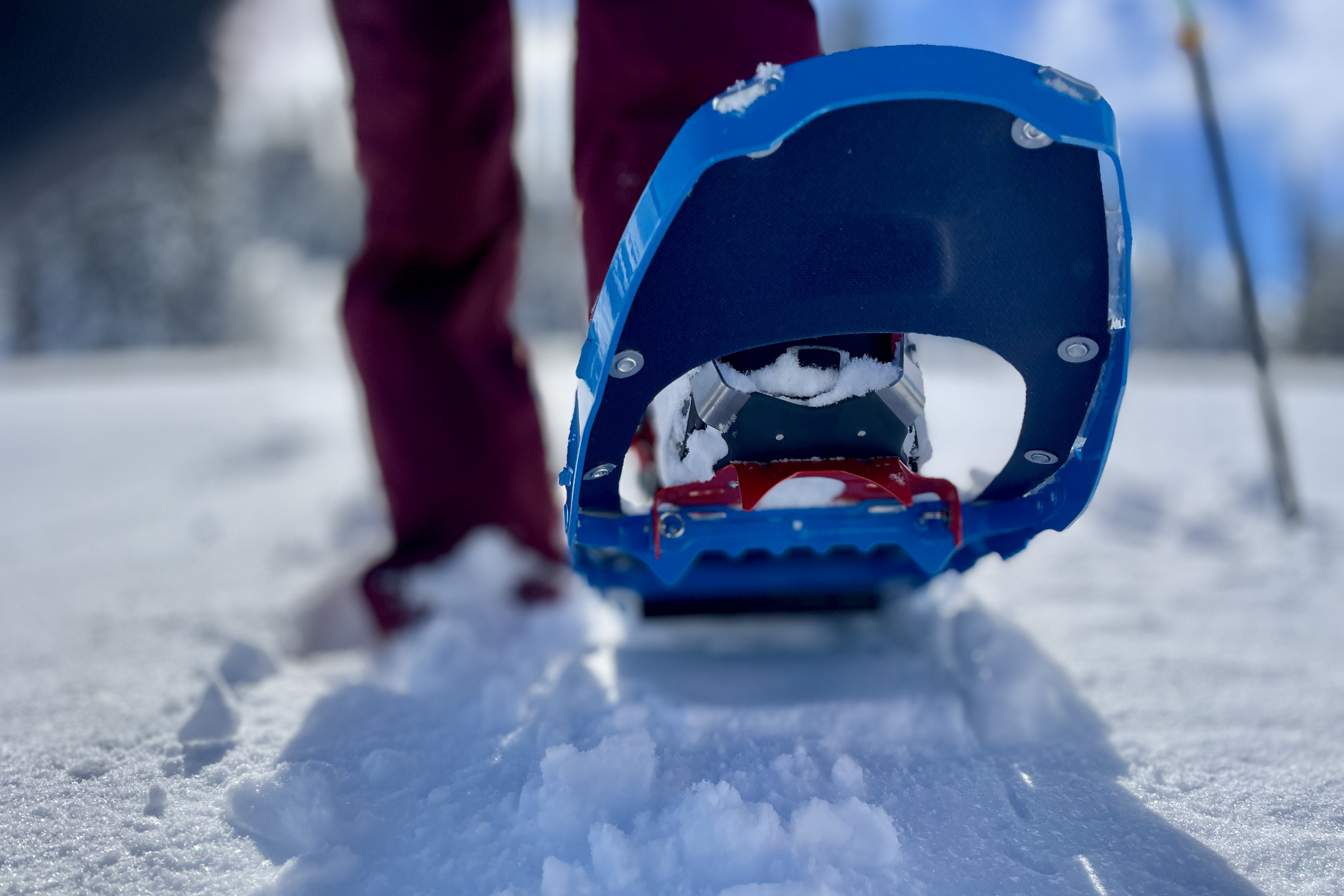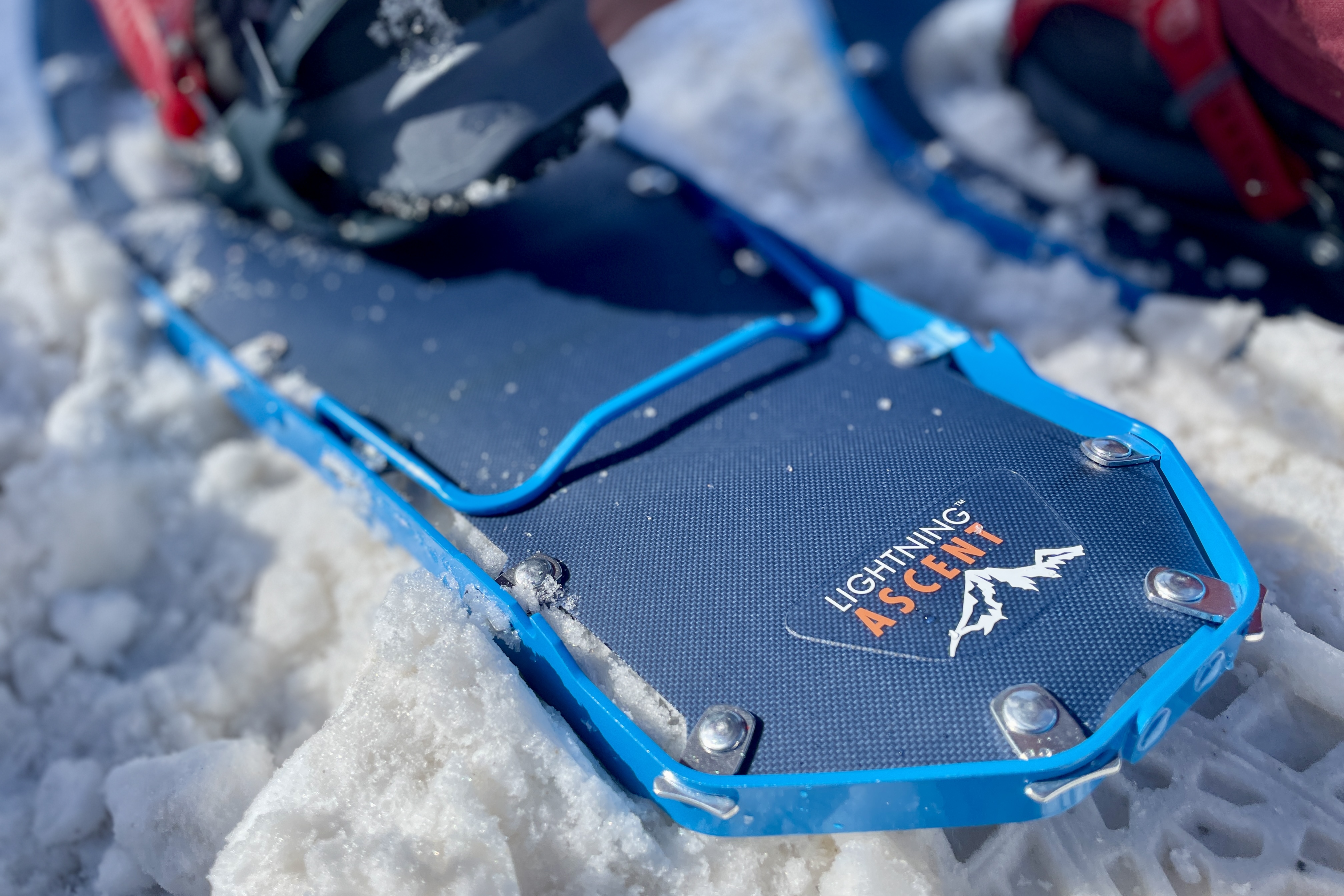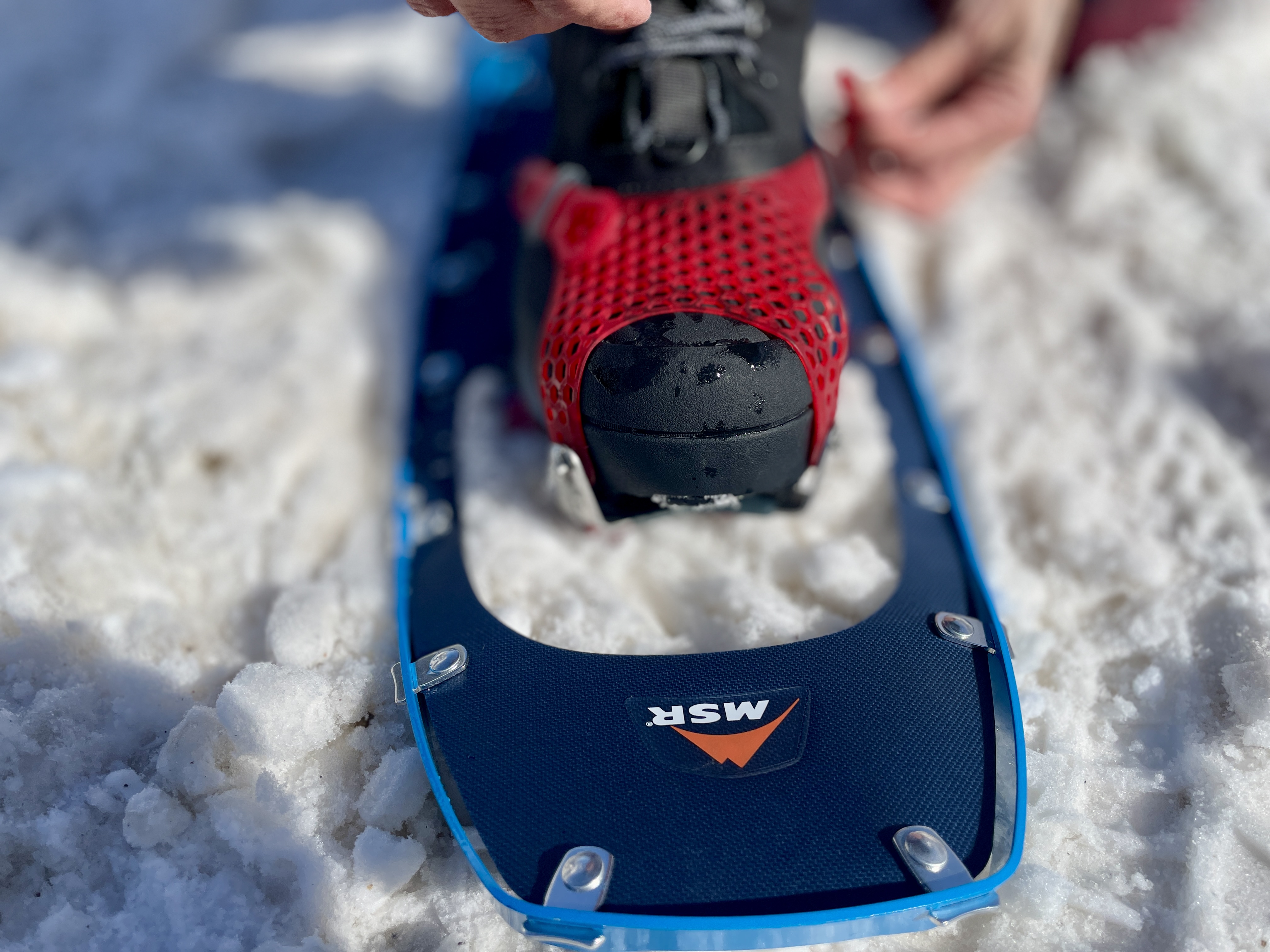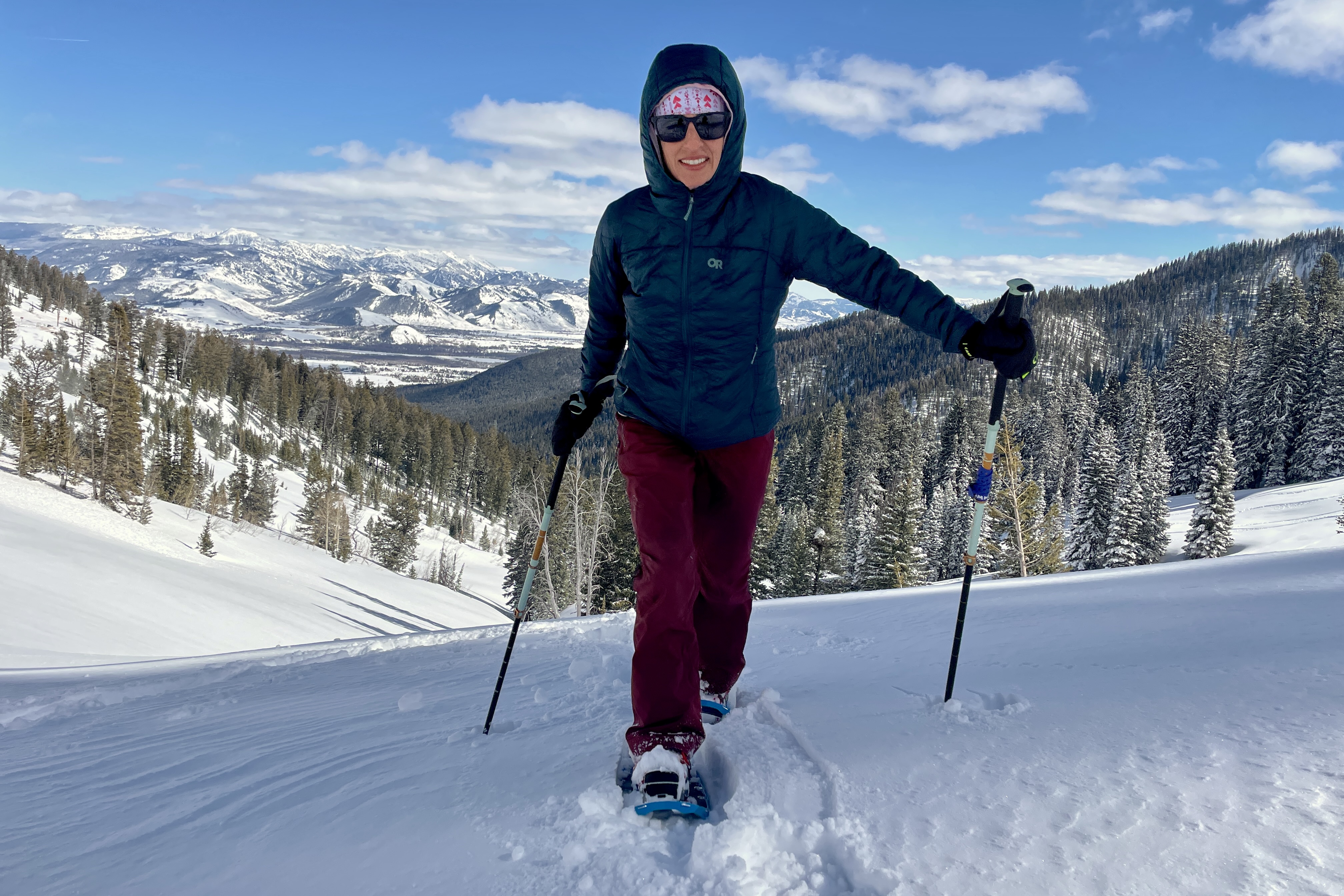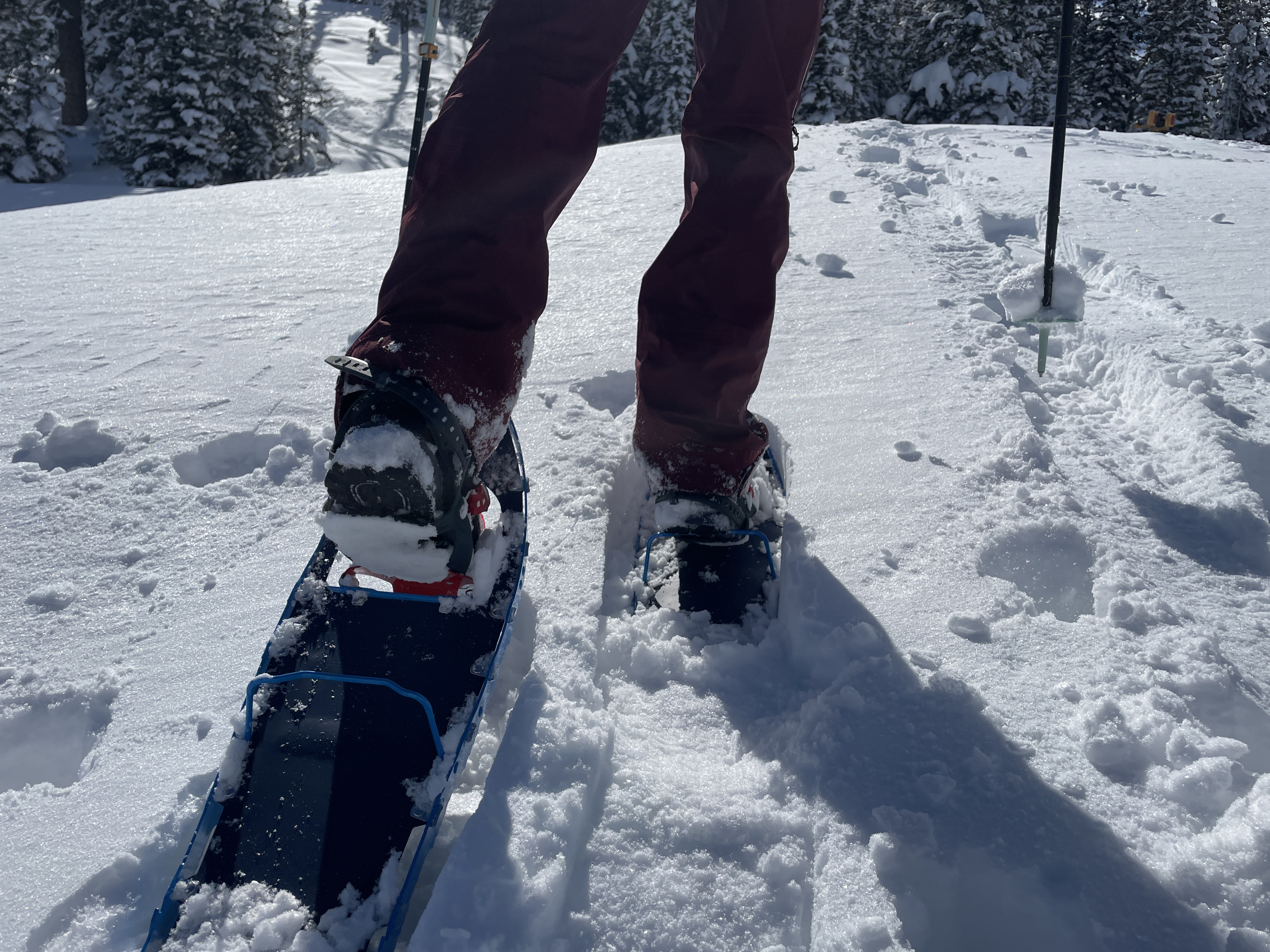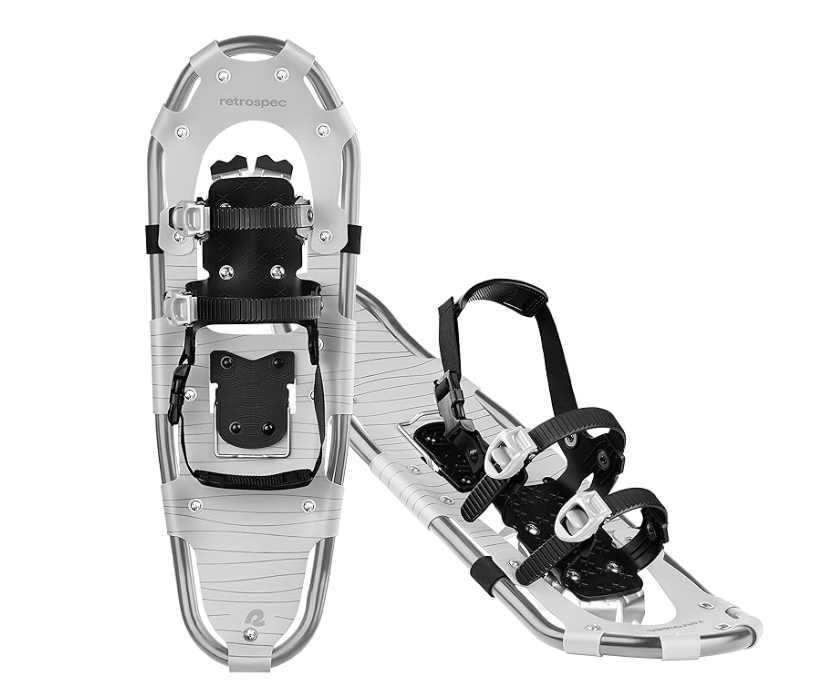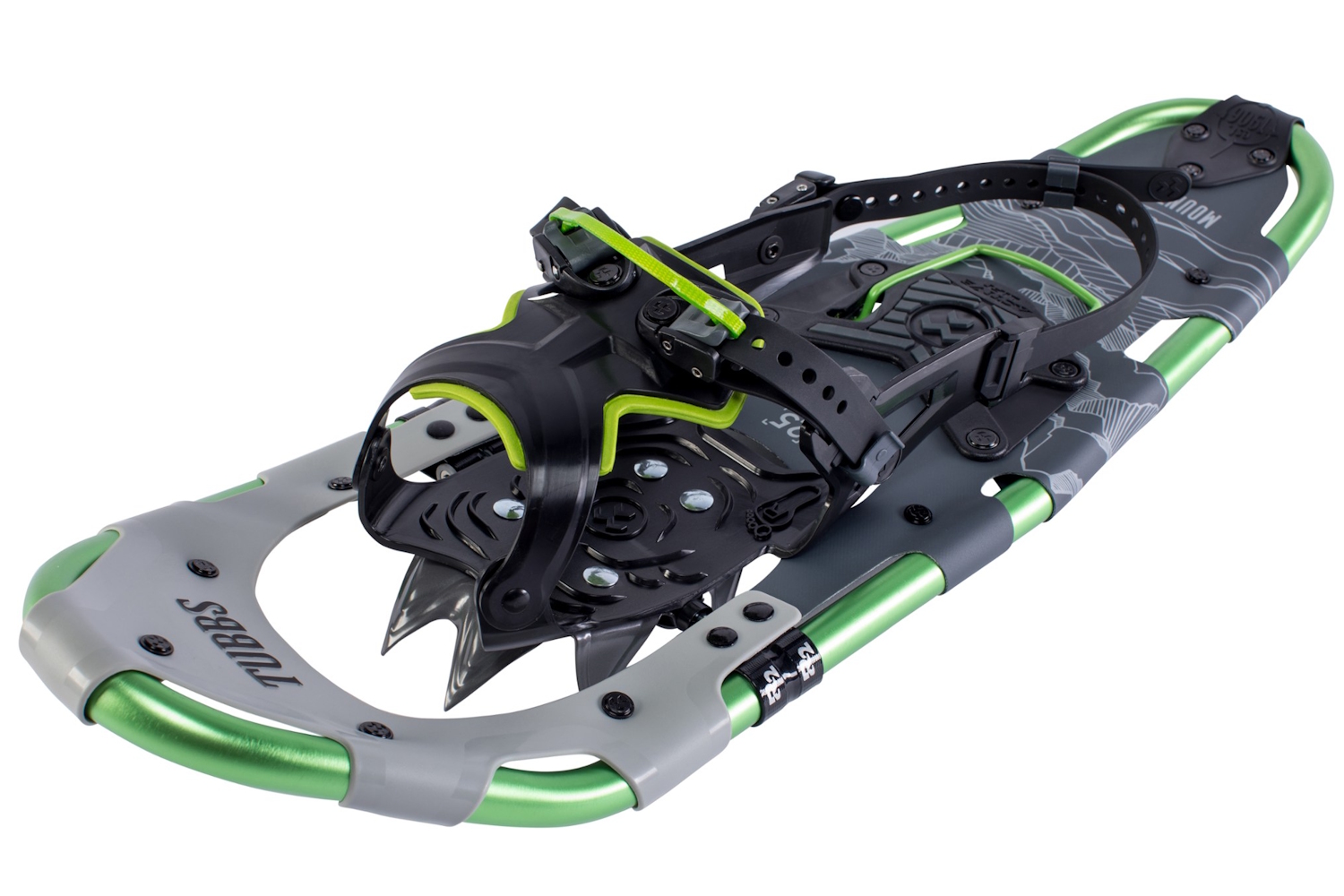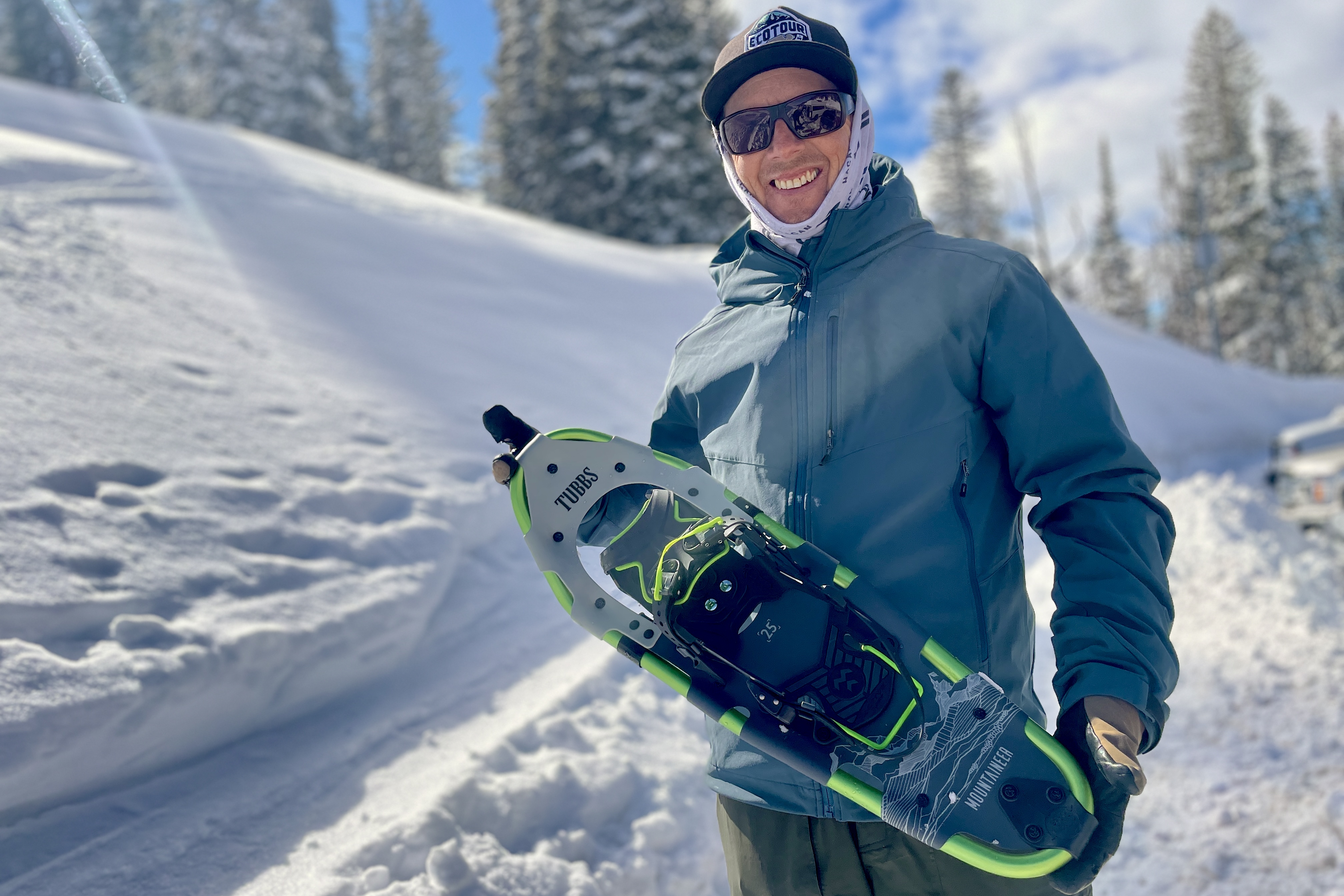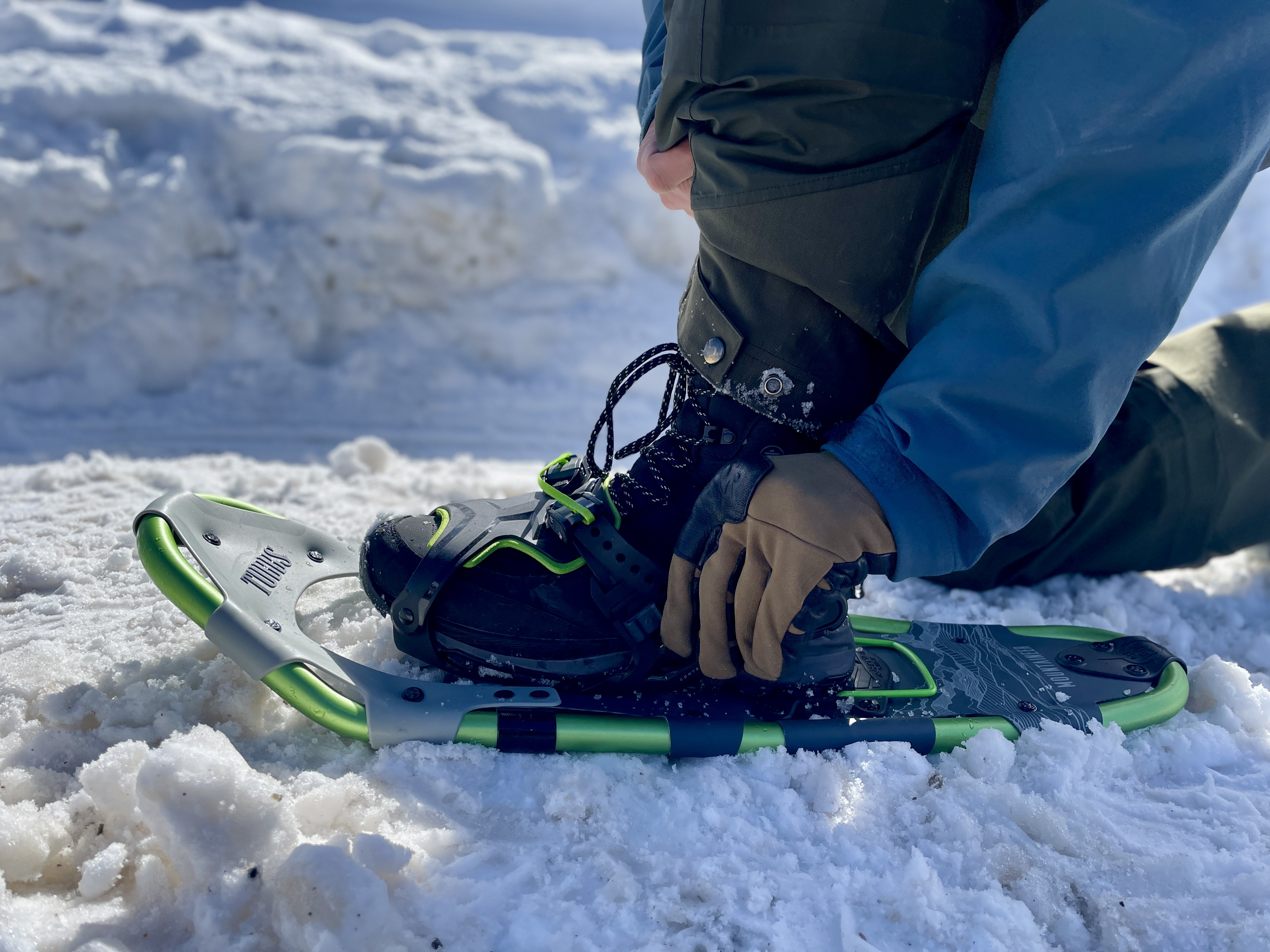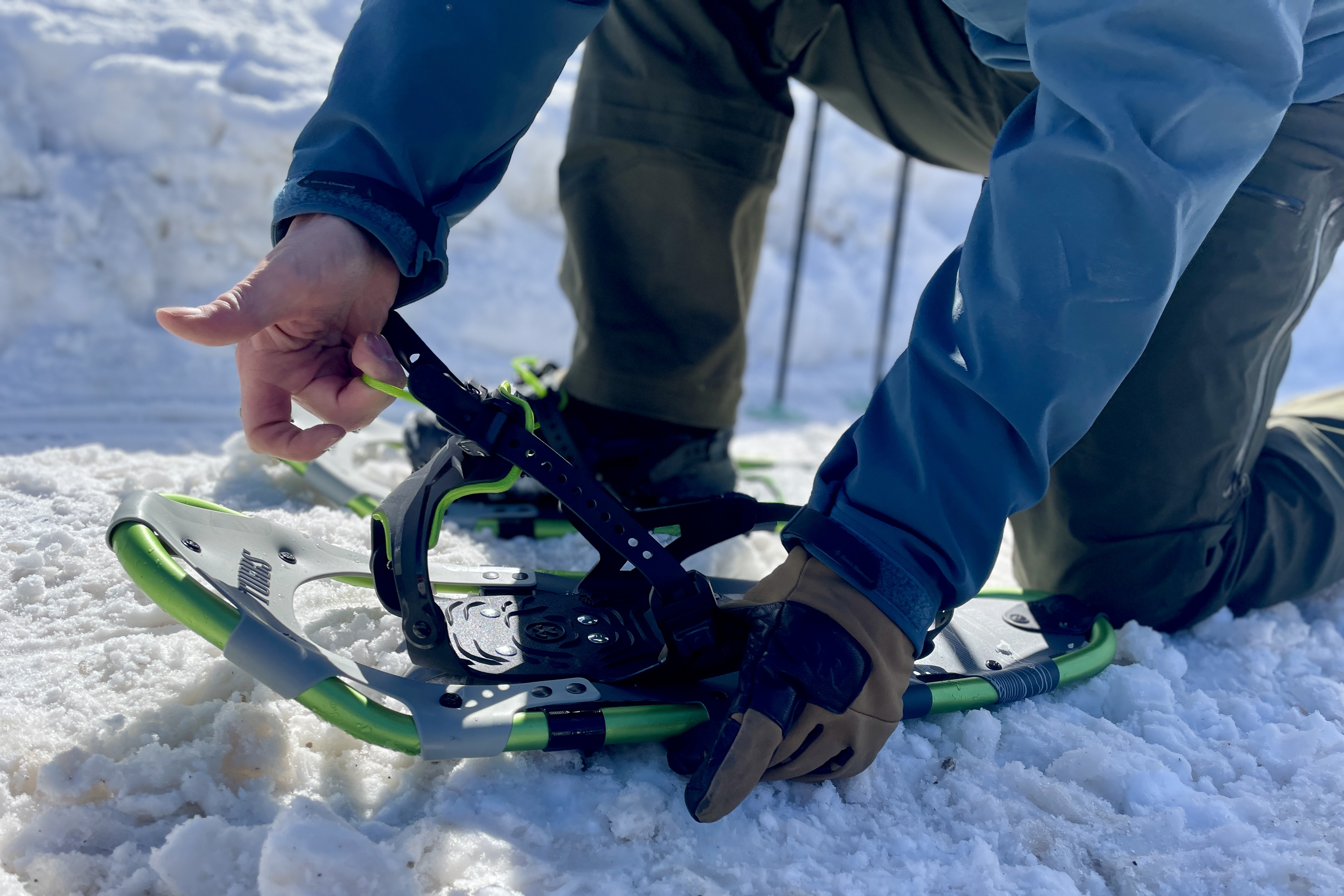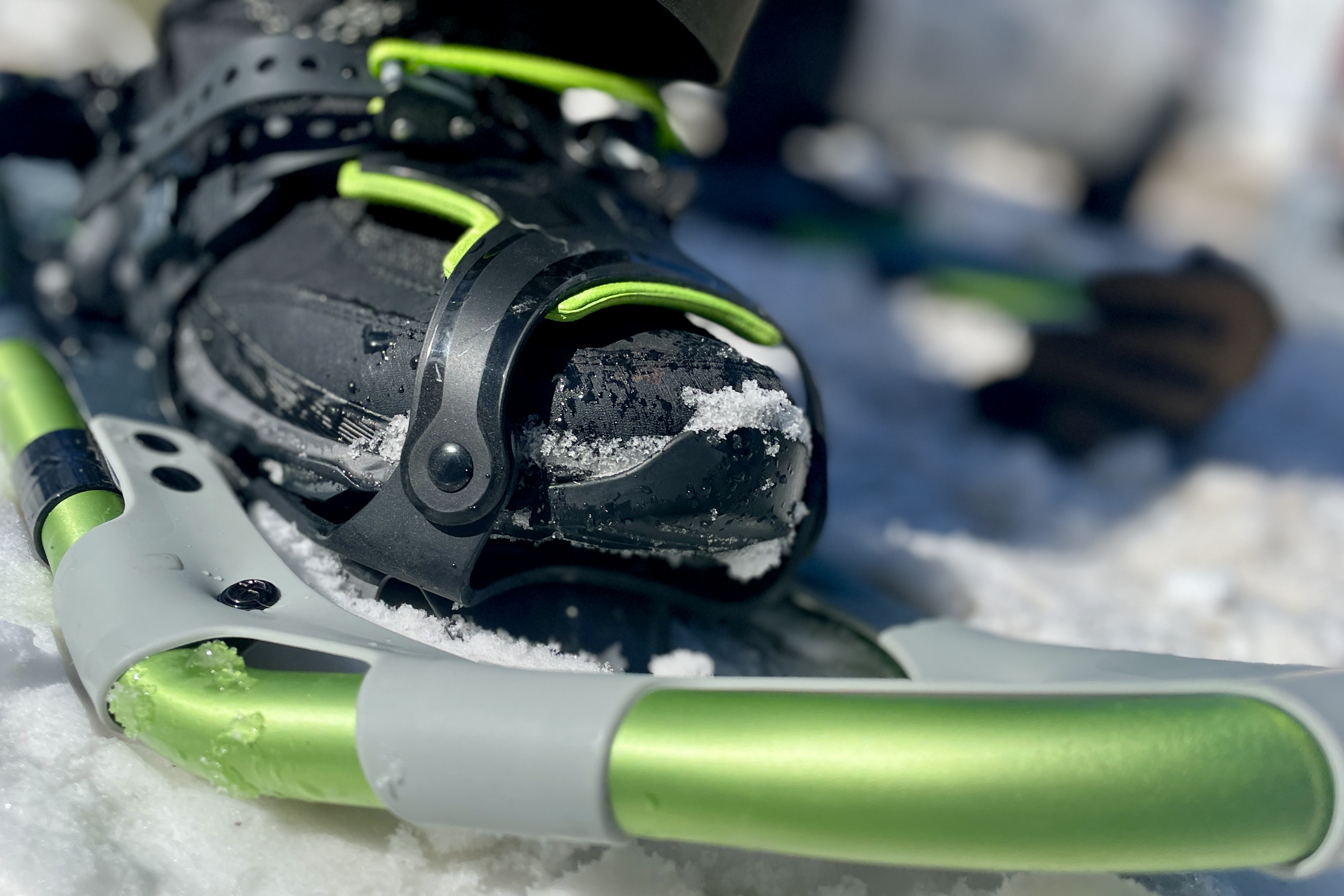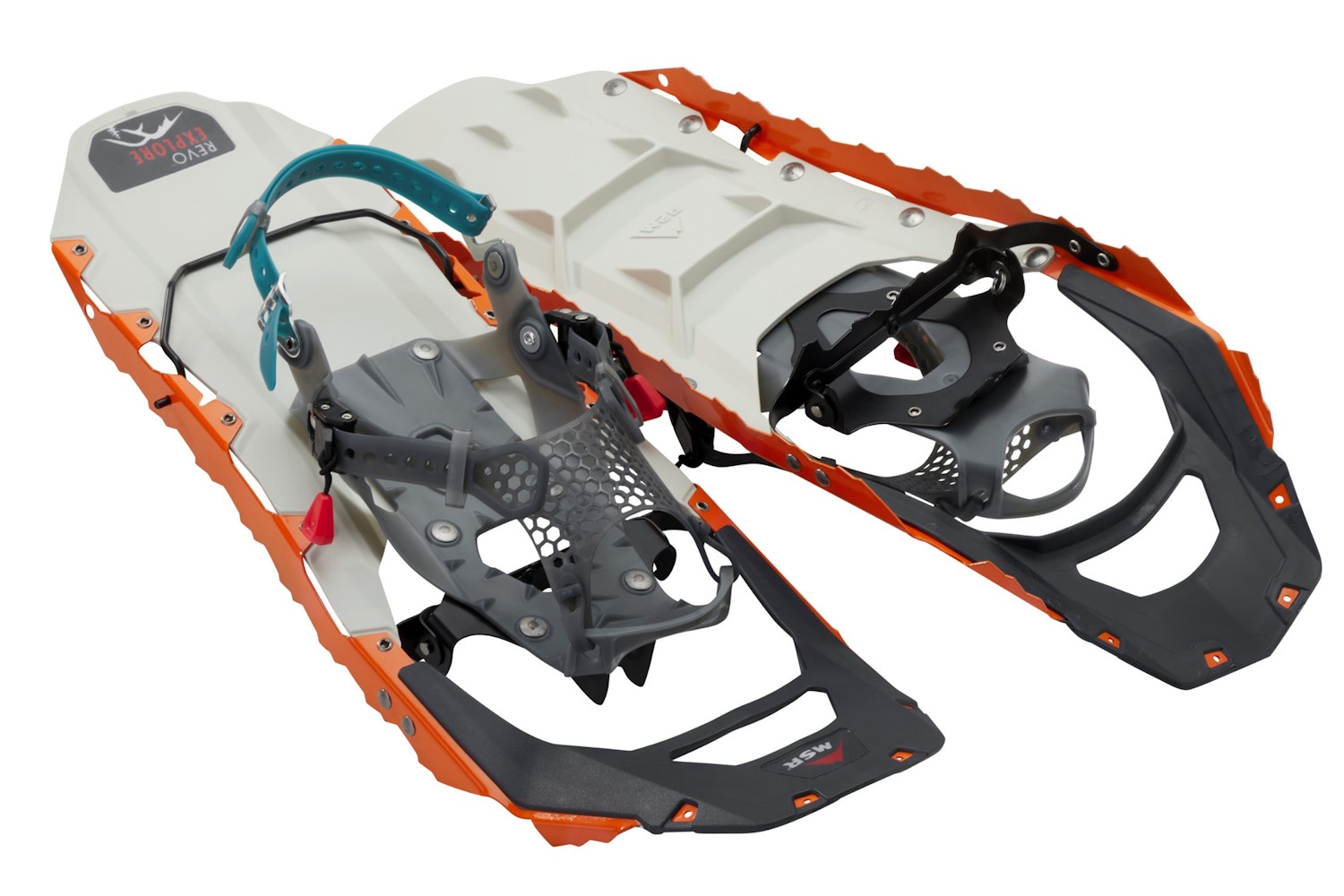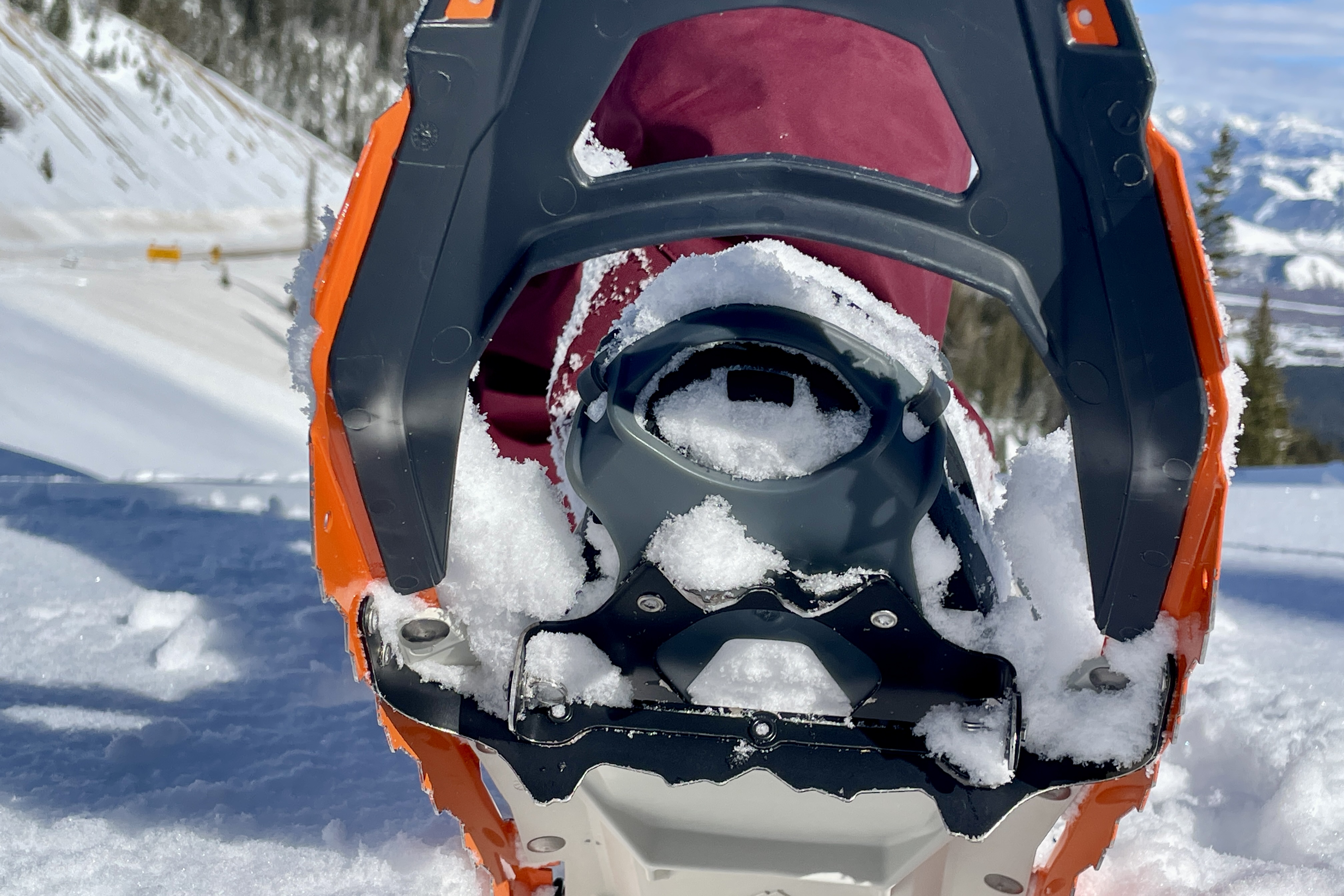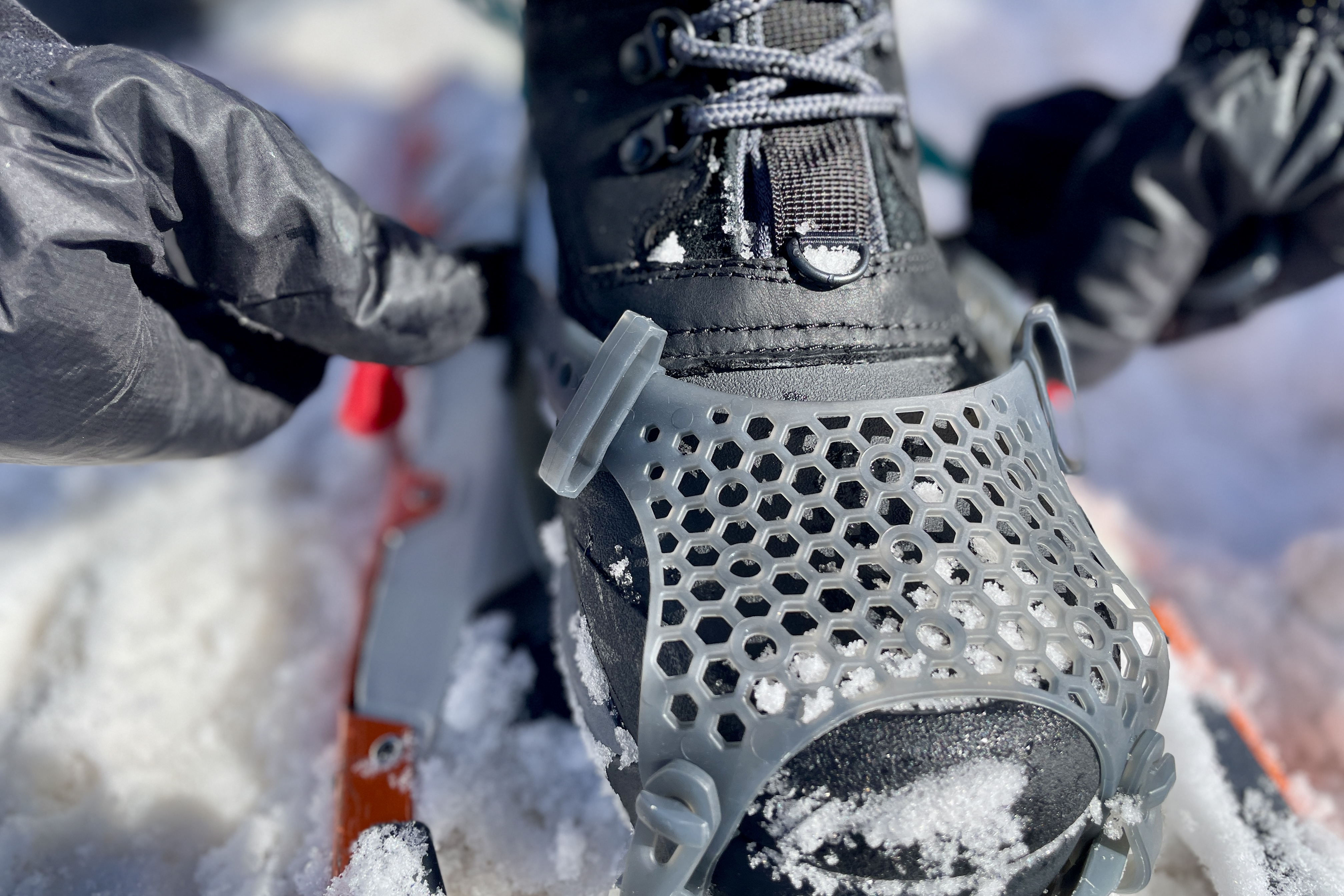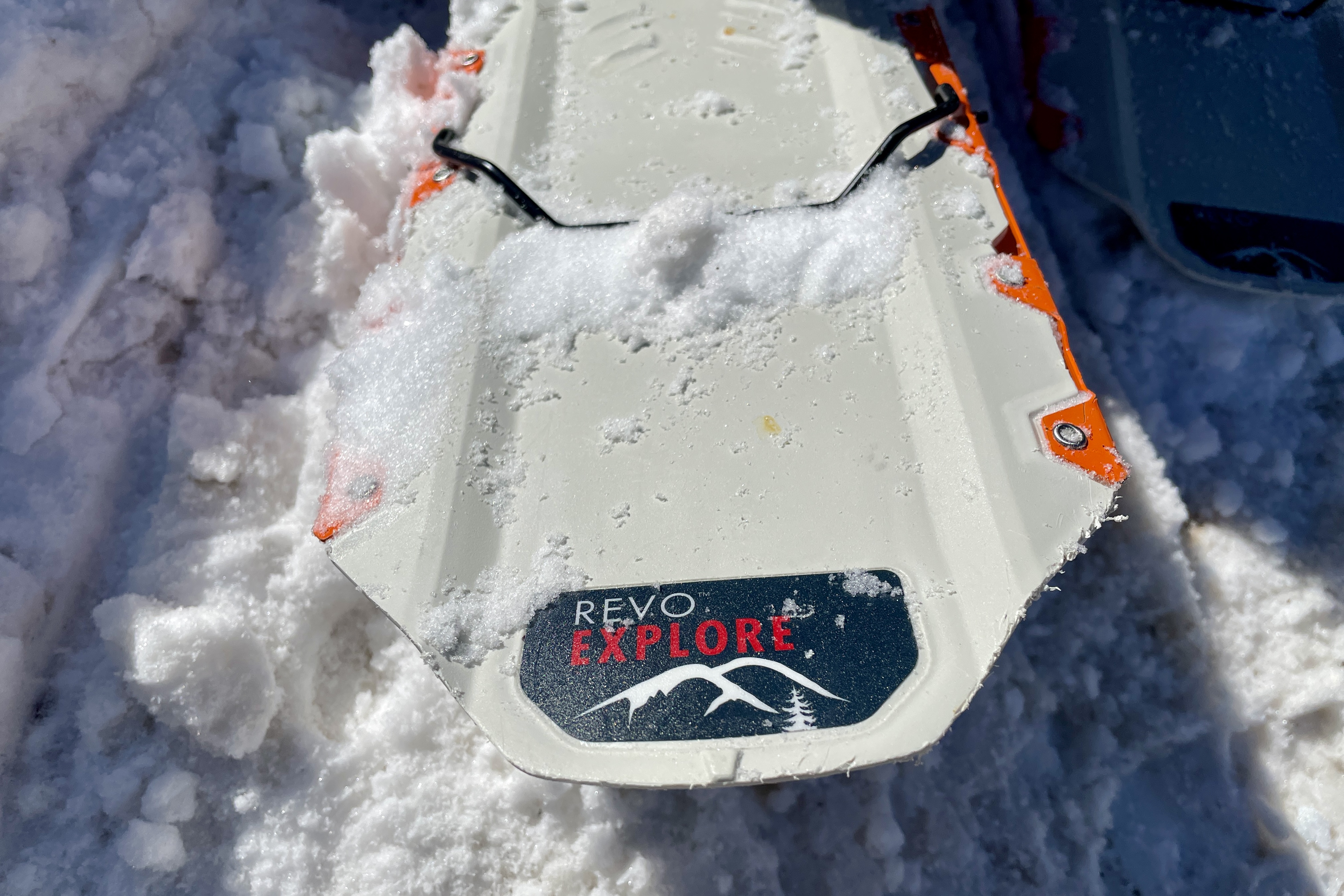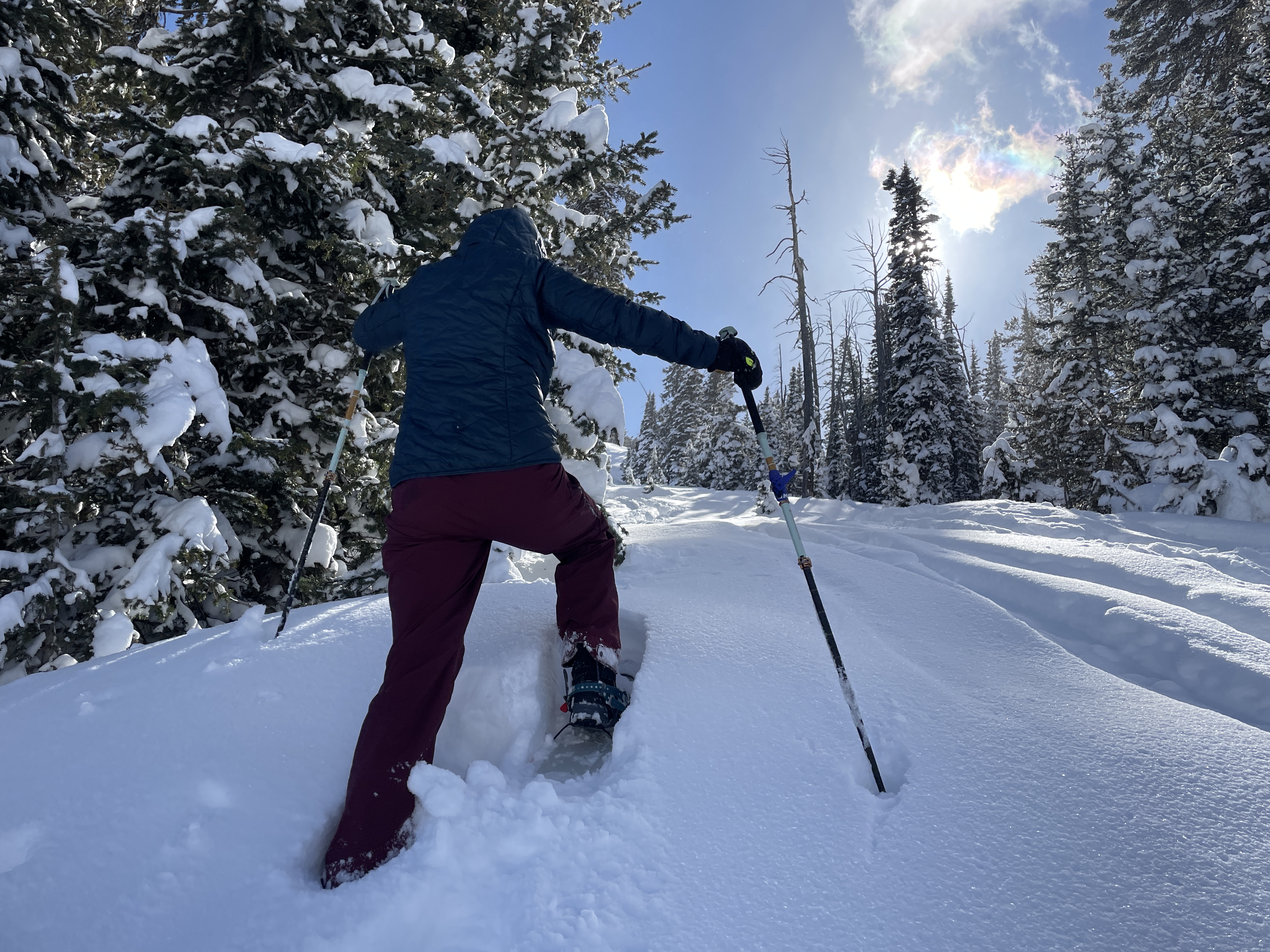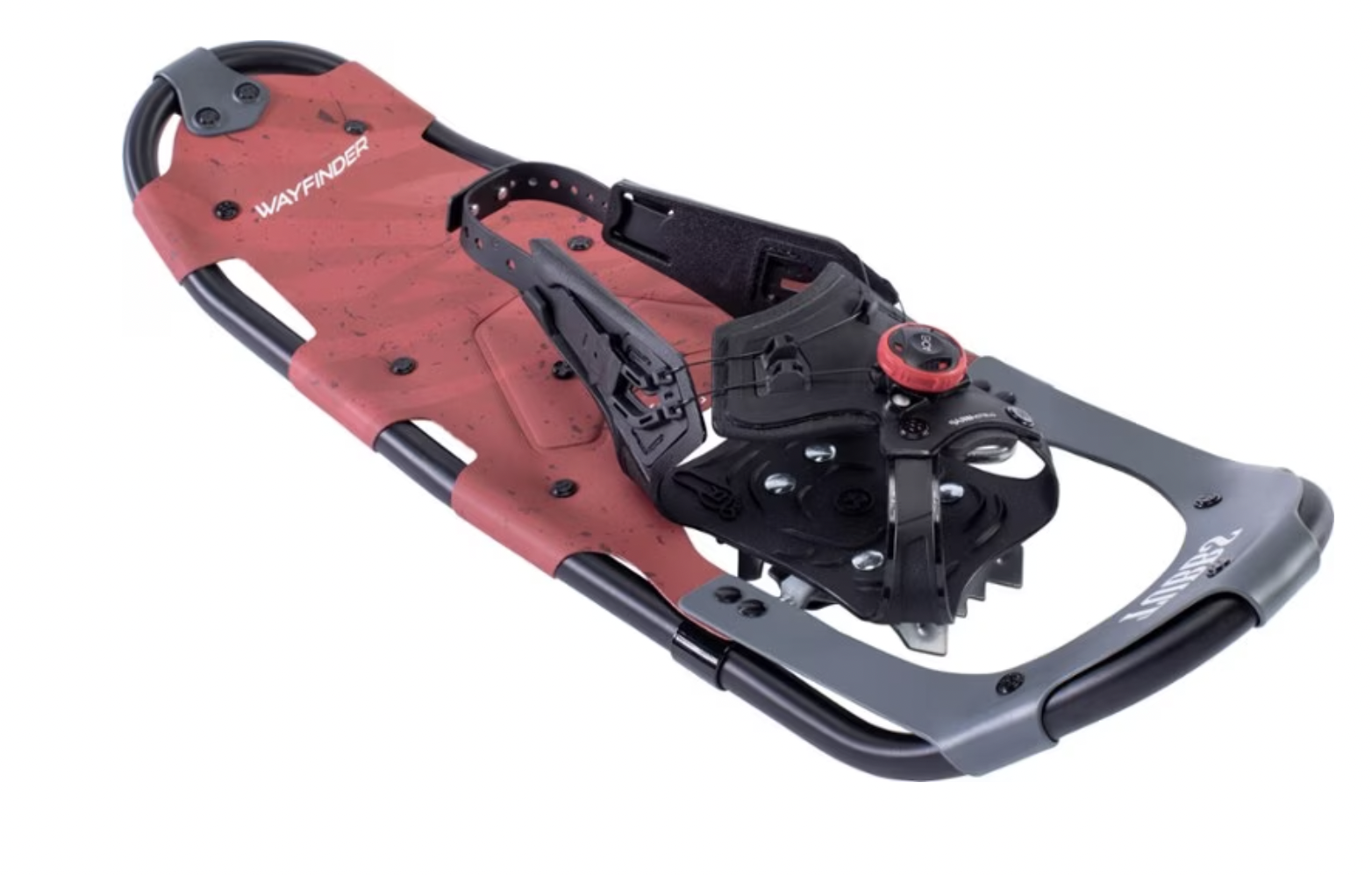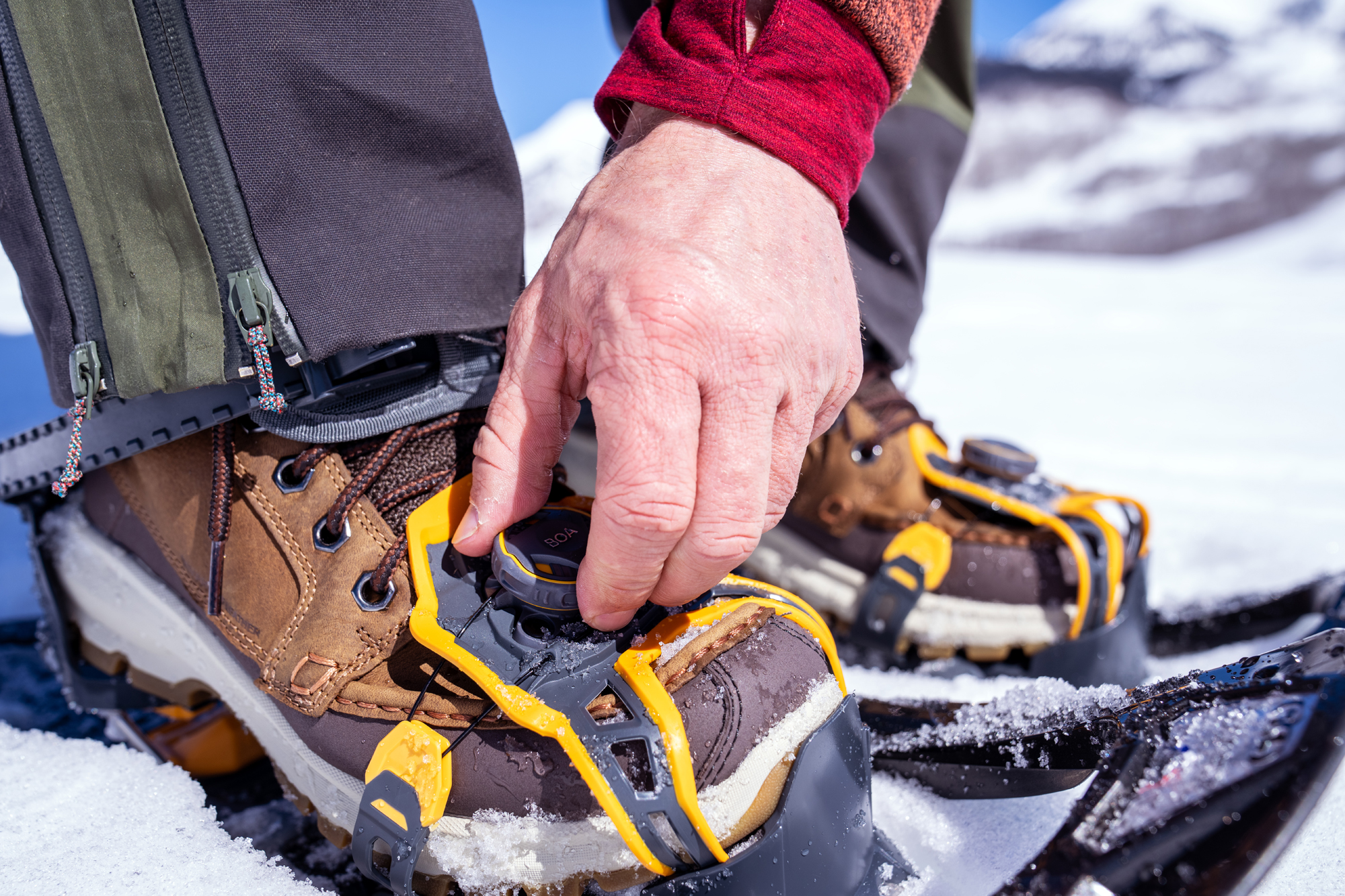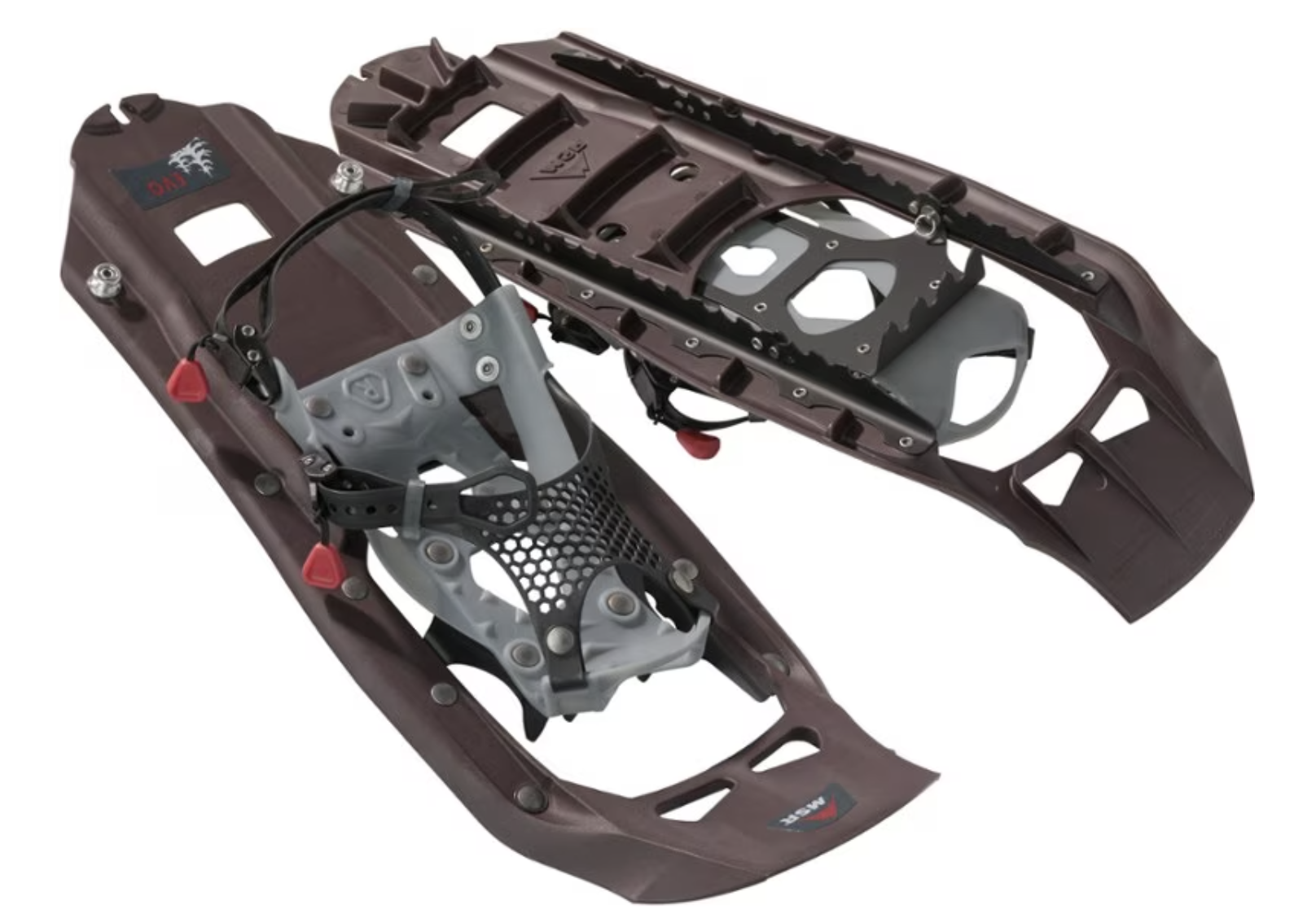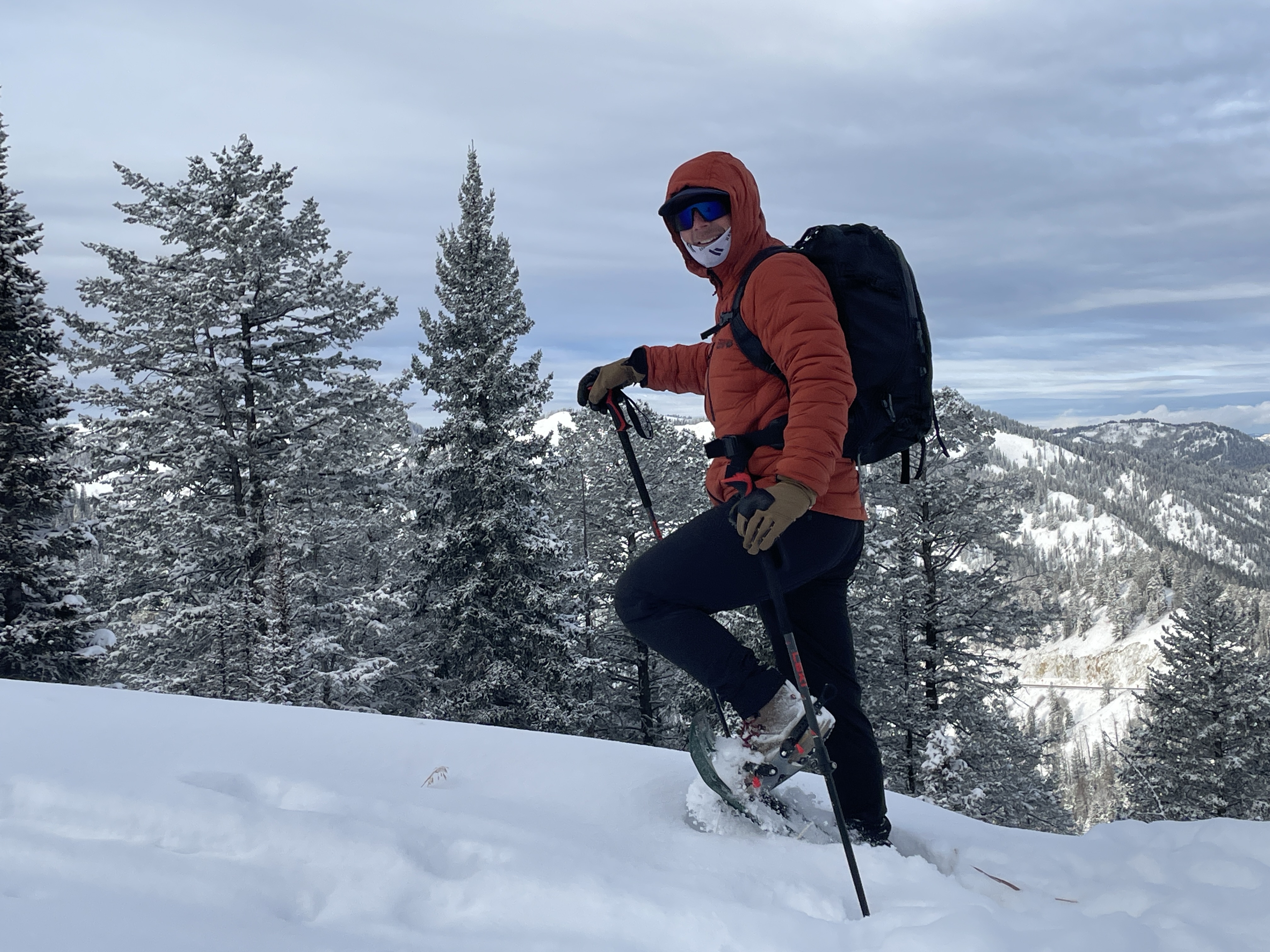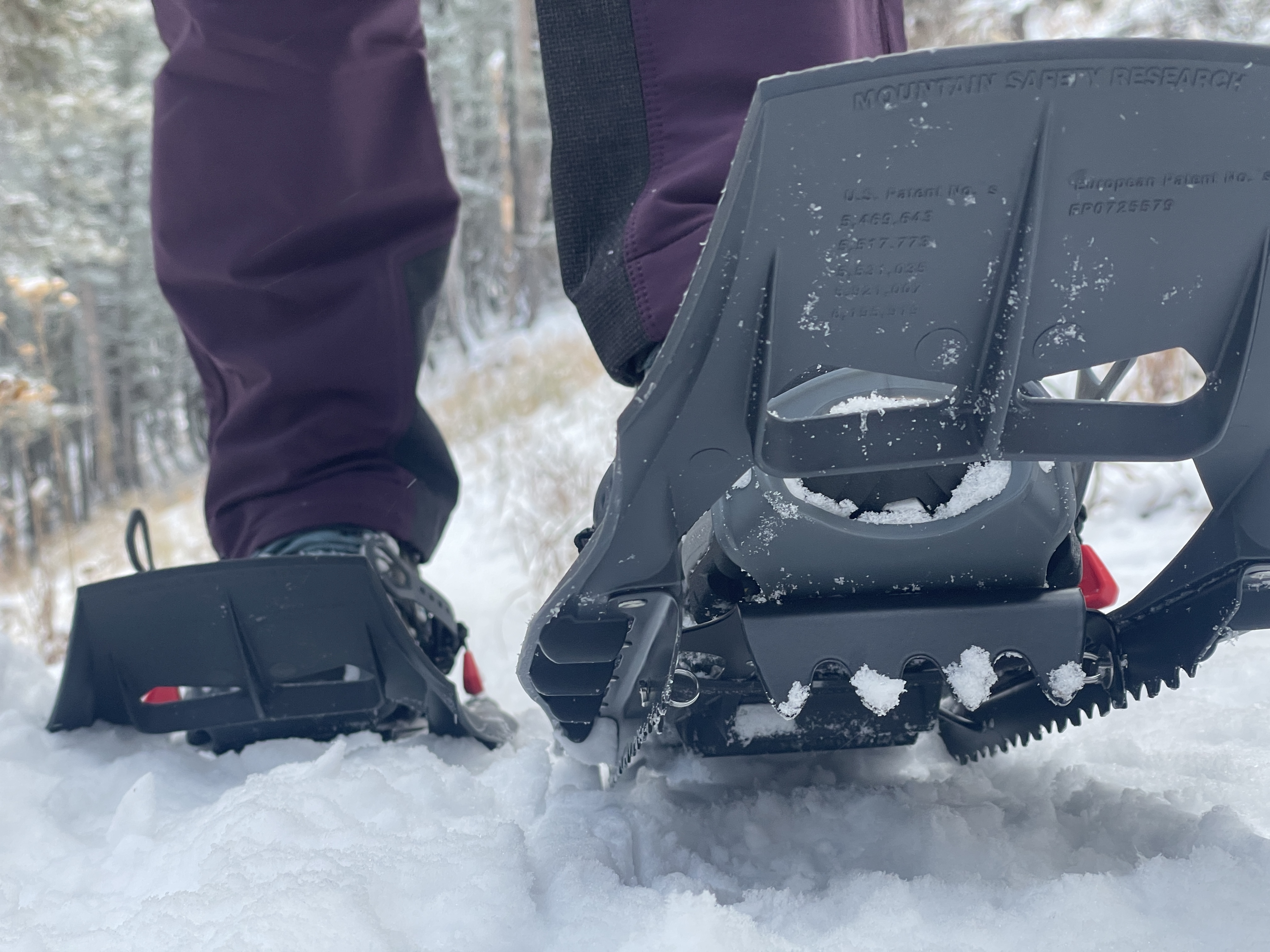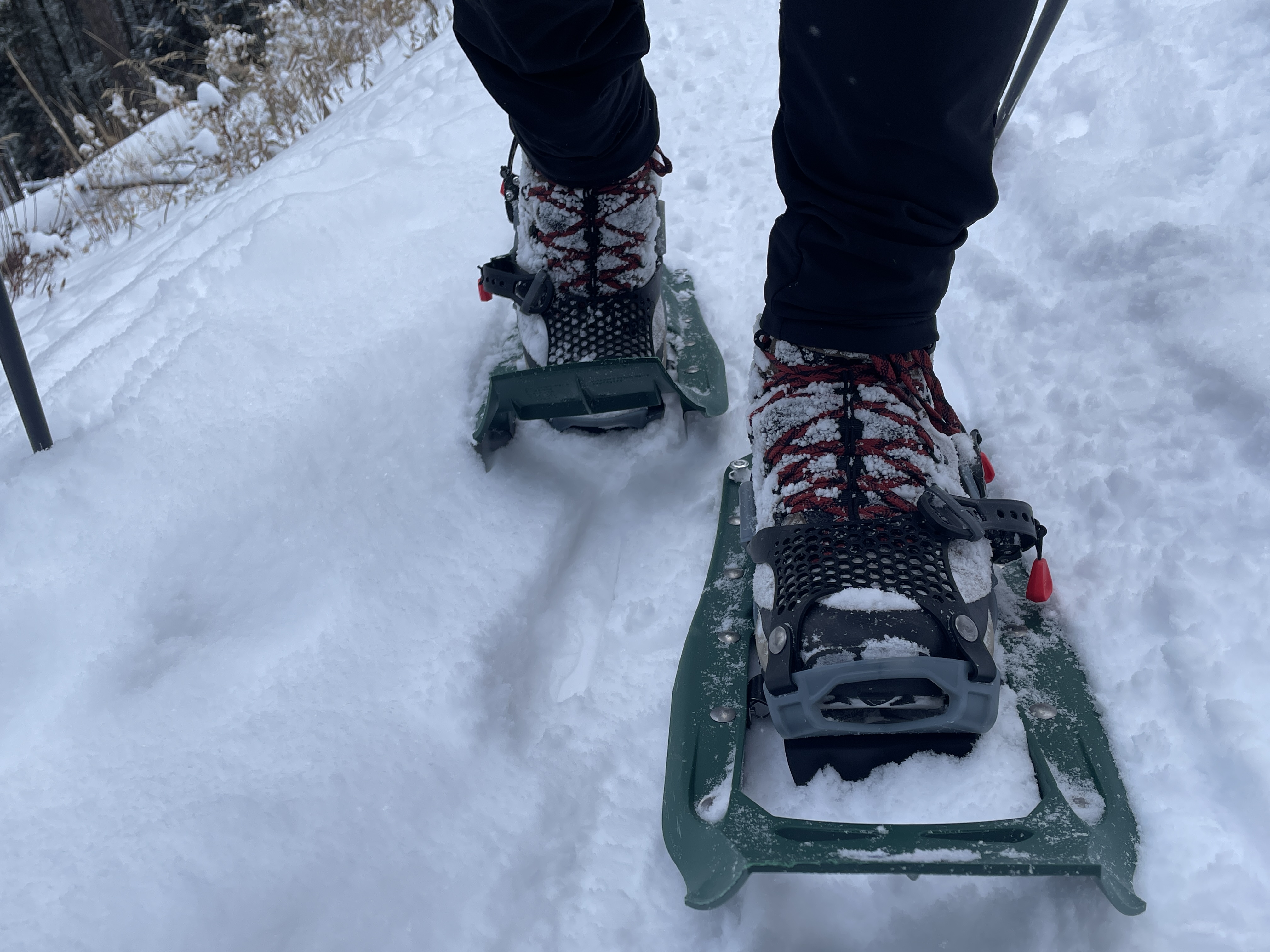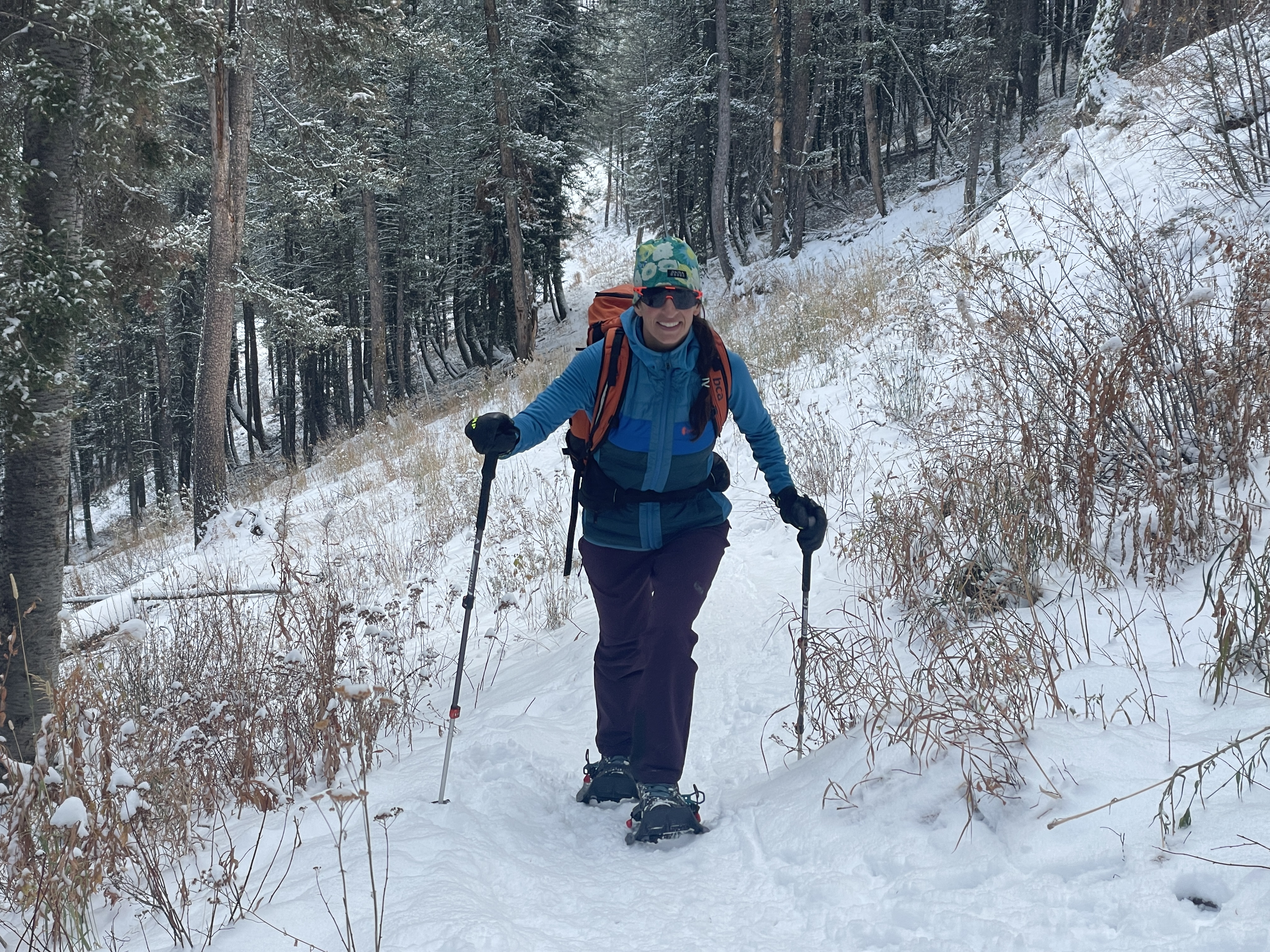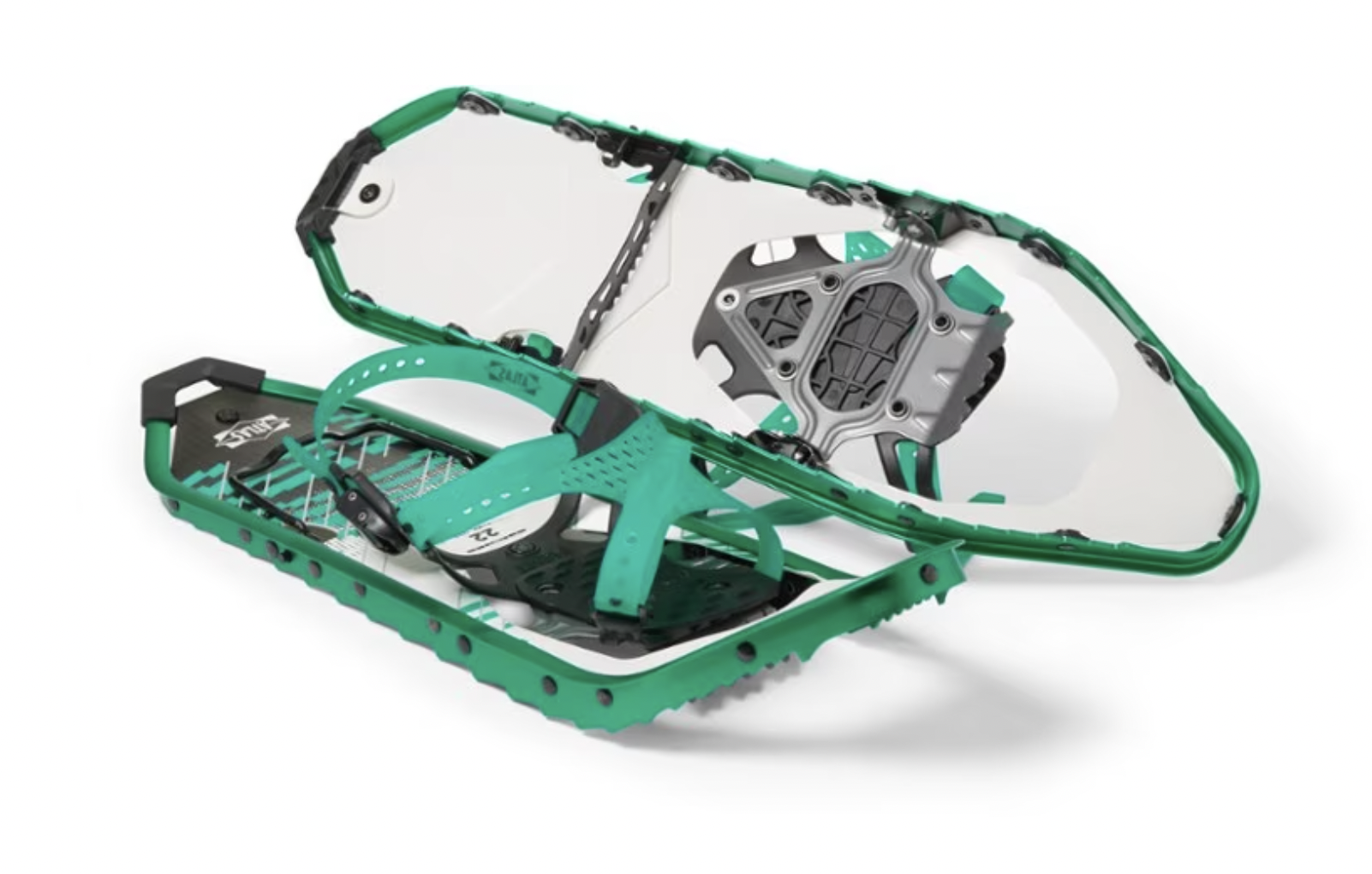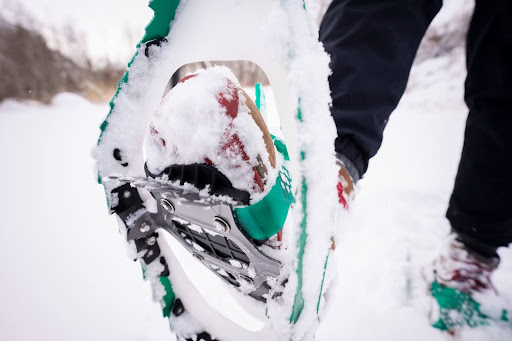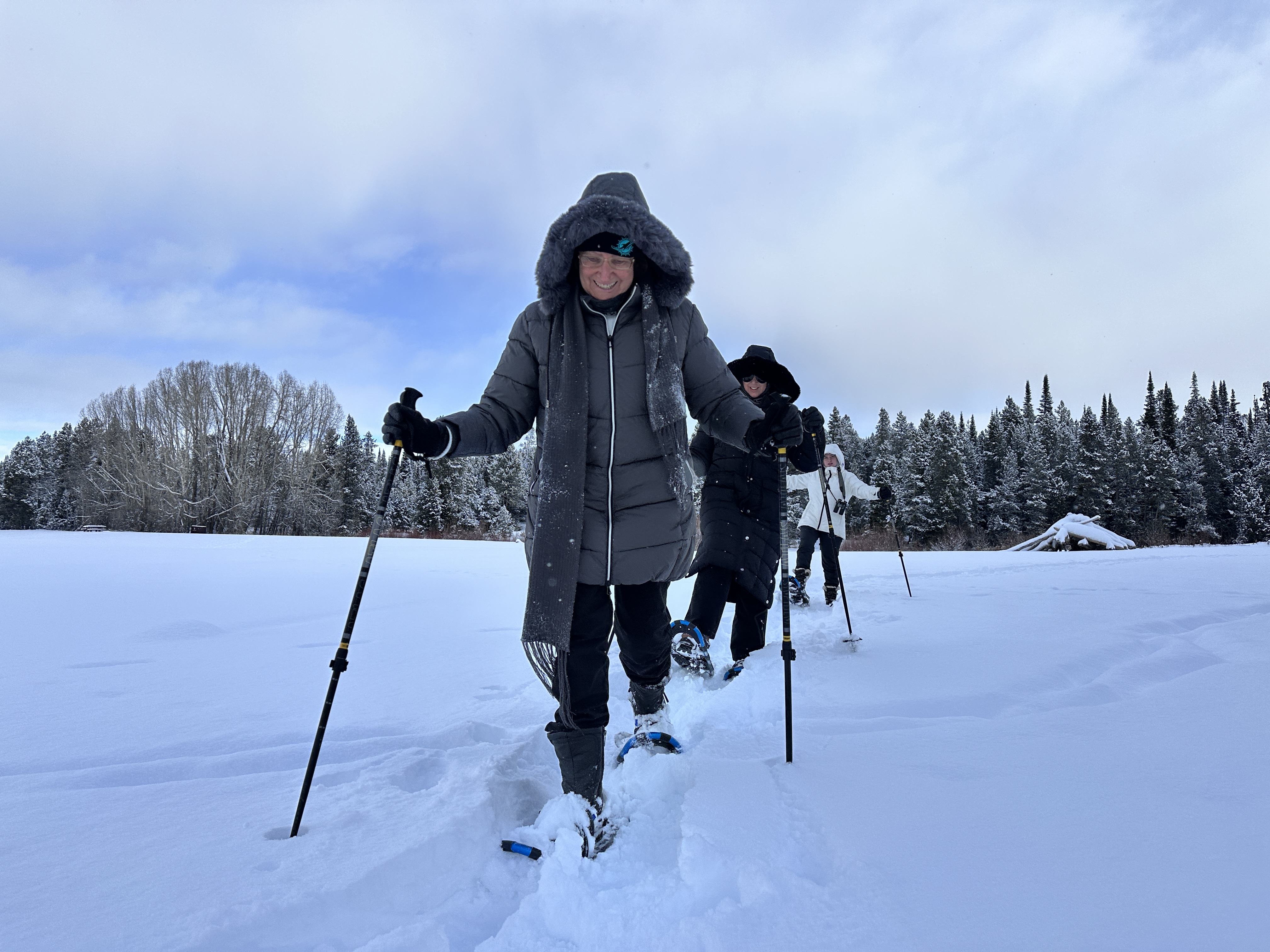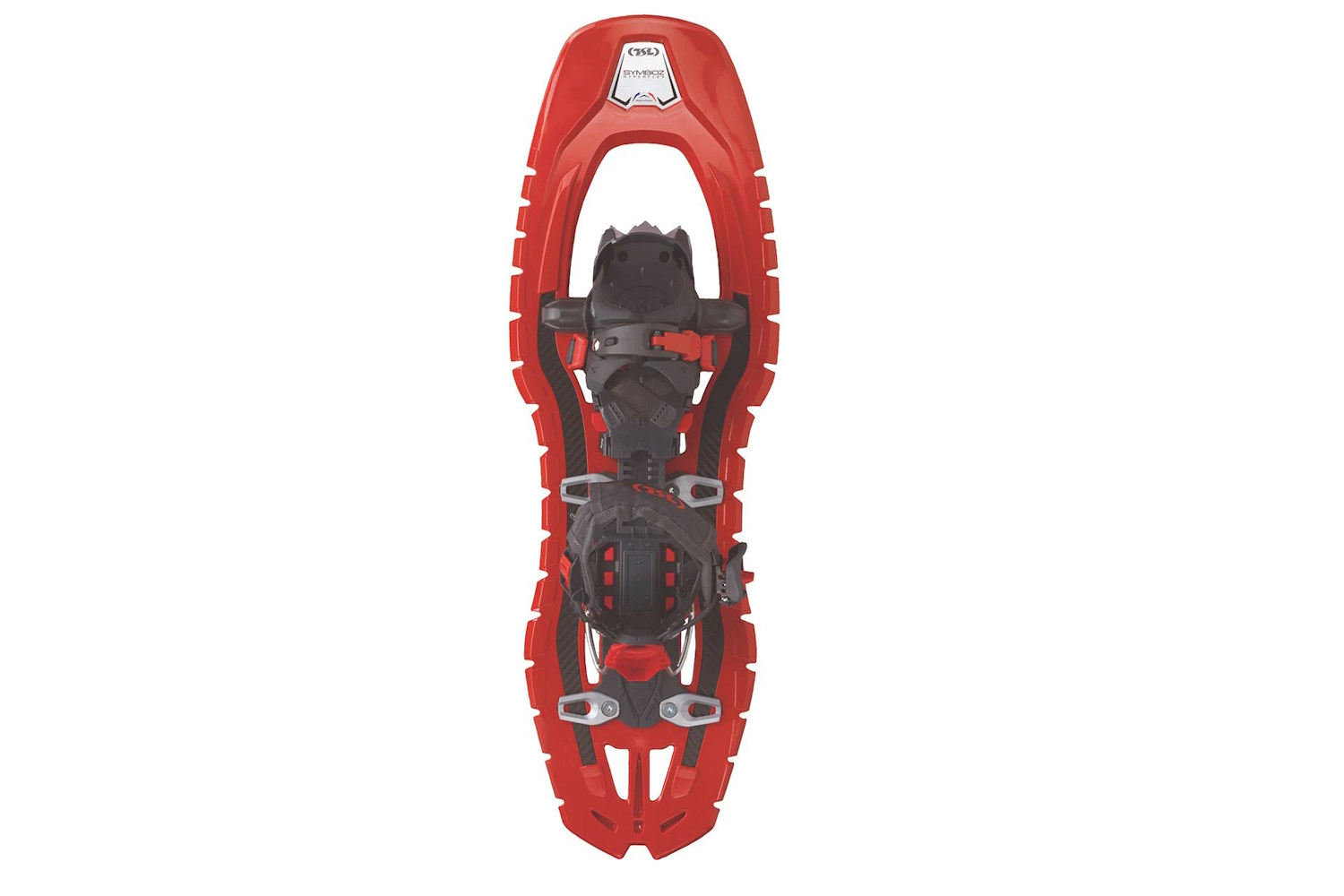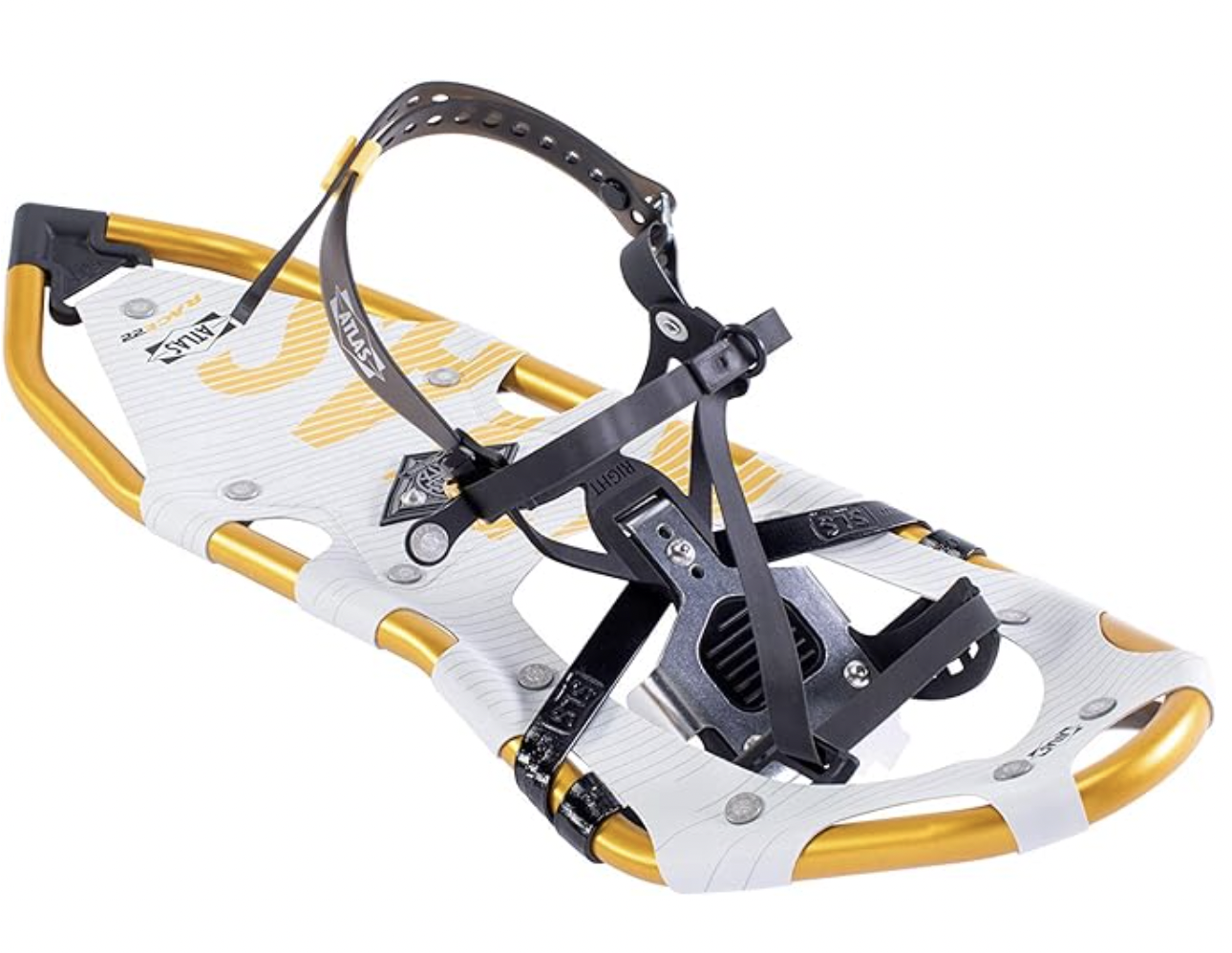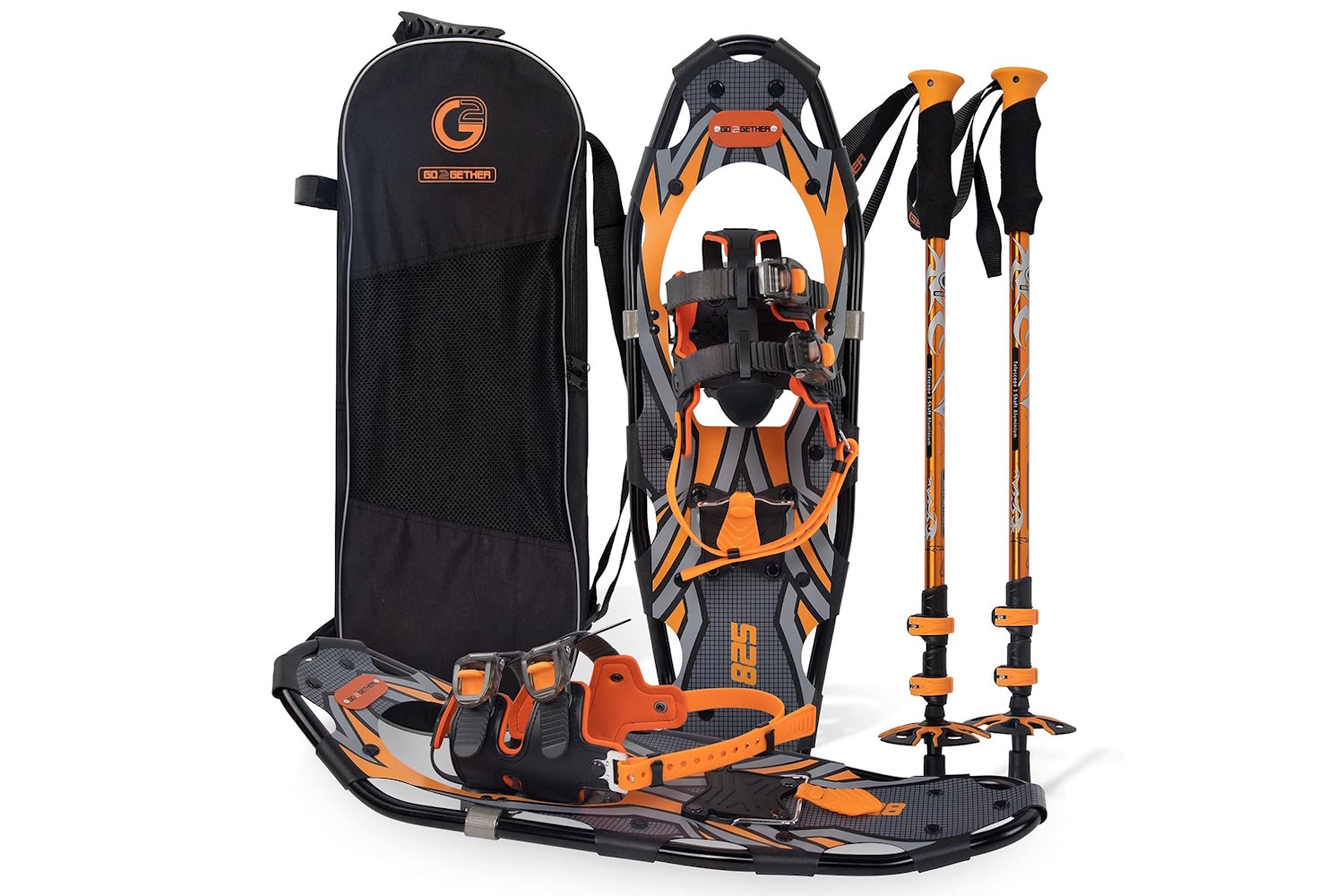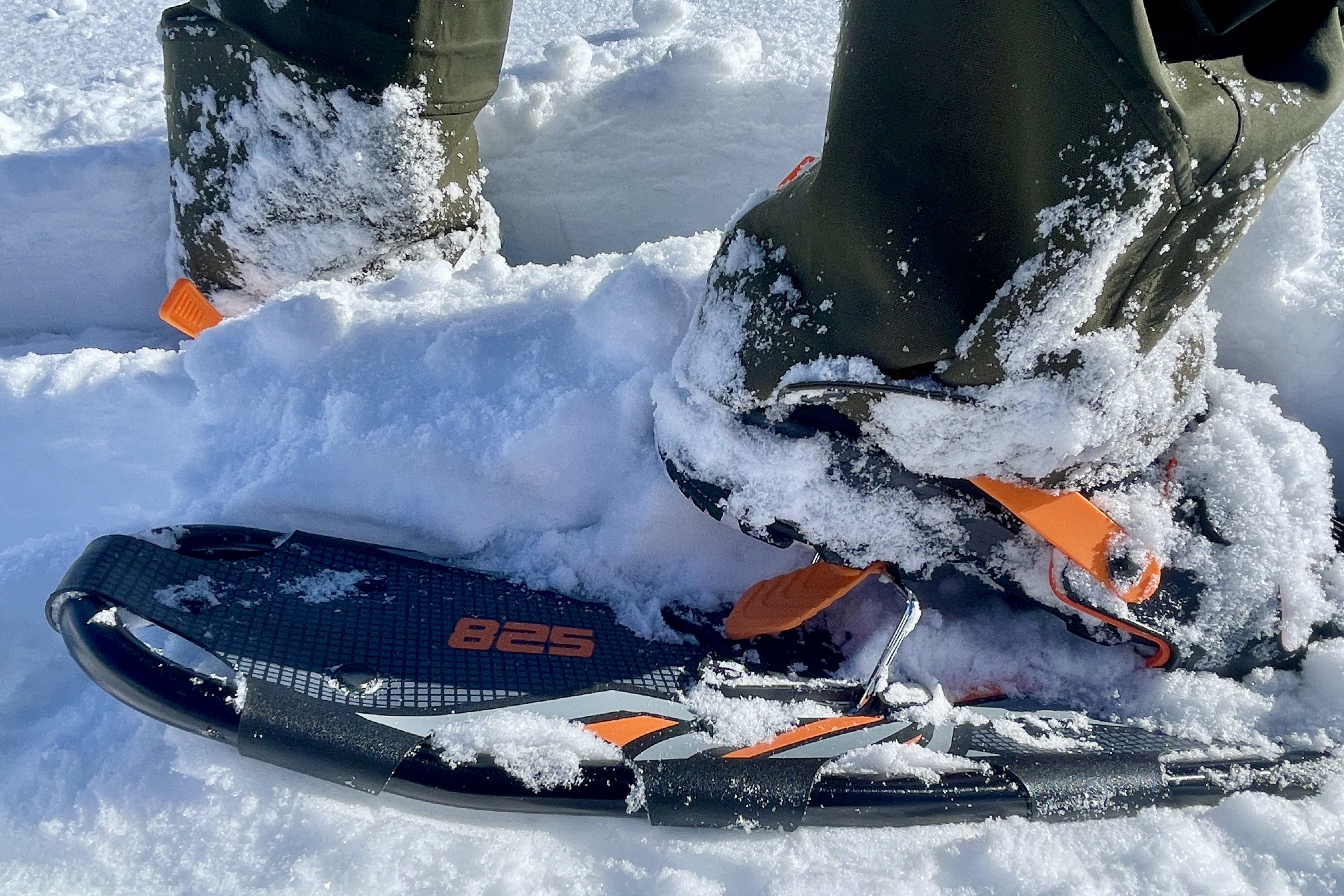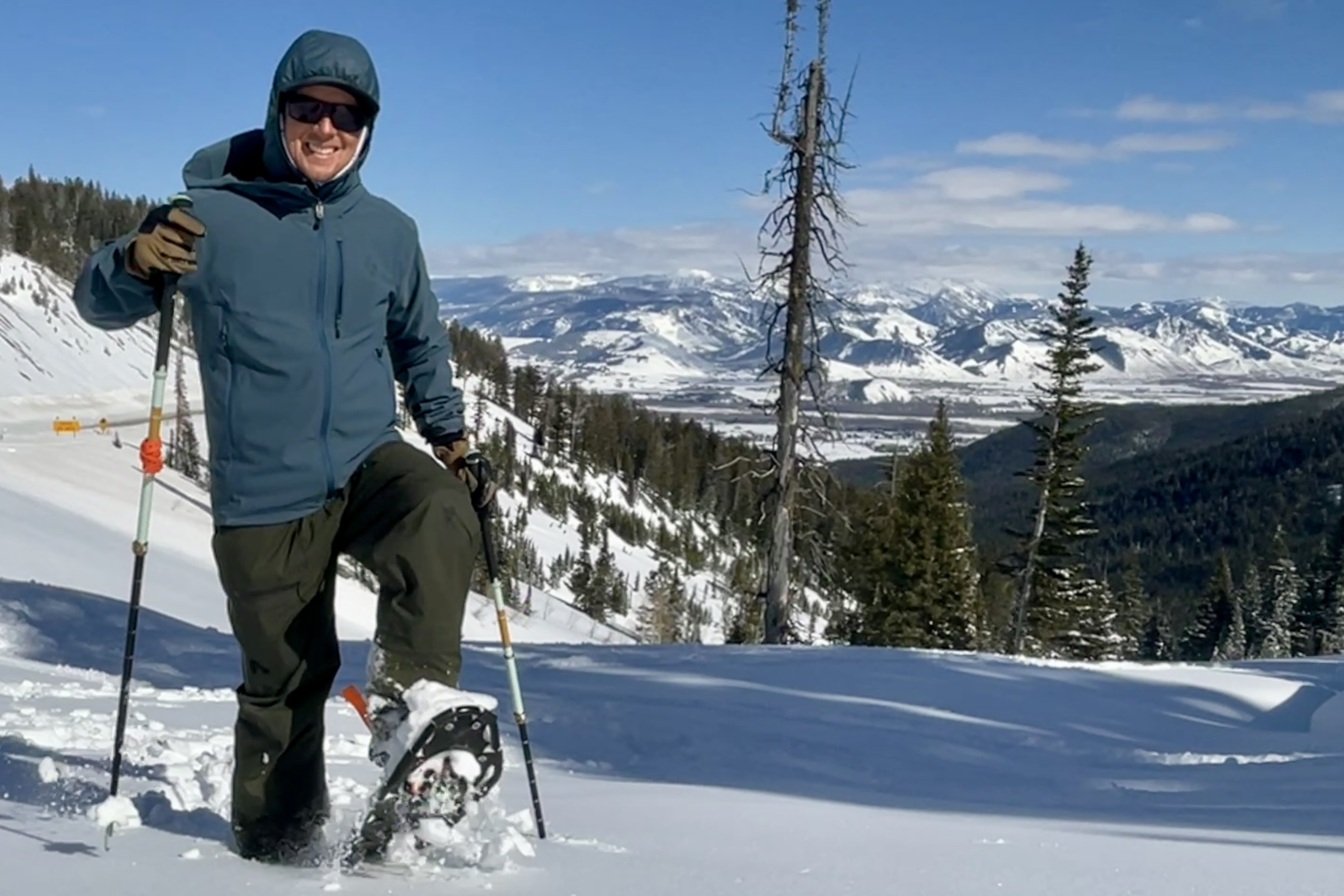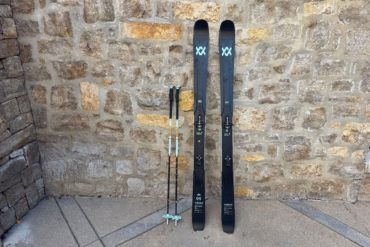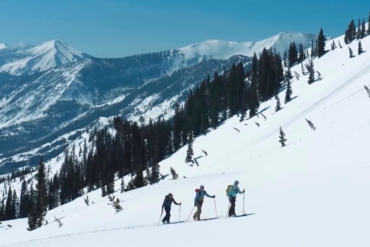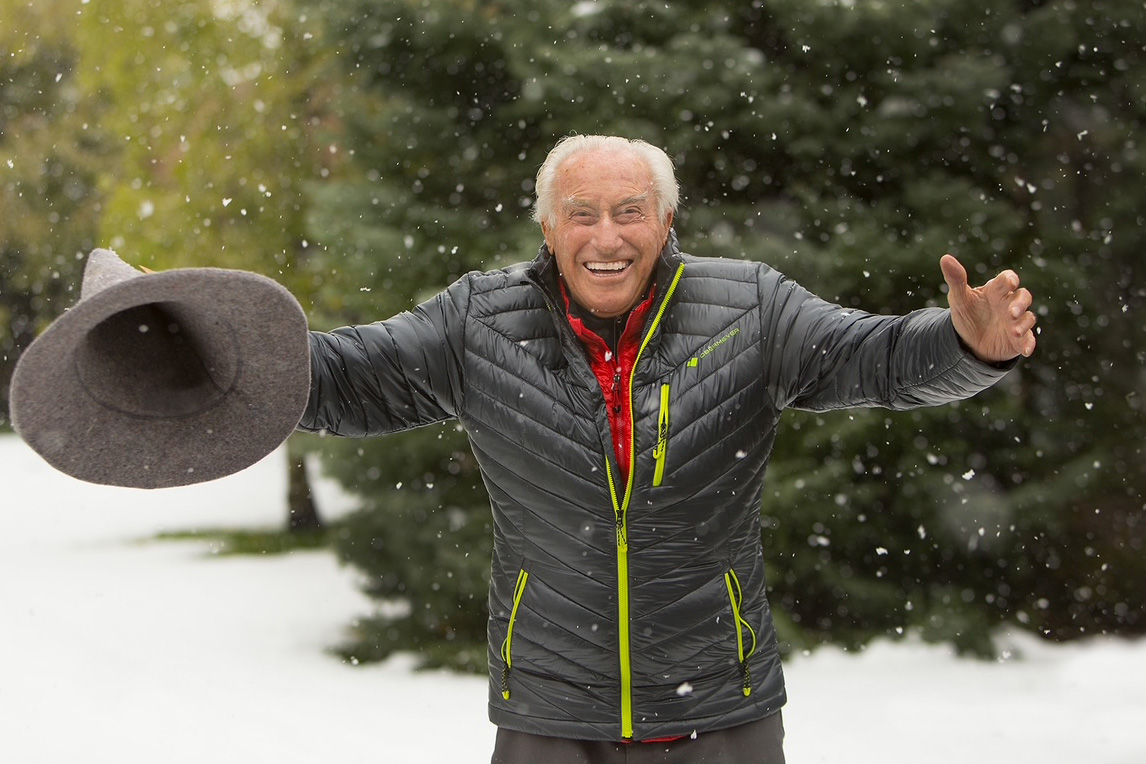Snowshoes aren’t one-size-fits-all. Choose the wrong pair, and even a perfect powder day can become a slog. The best snowshoes match your terrain and goals, whether scaling icy peaks, breaking trail through deep drifts, or just cruising groomed trails with the family. From compact models built for steep climbs to wide platforms designed for serious float, there’s a tool for every type of winter adventure.
The MSR Lightning Ascent remains our top pick if you’re hitting the trails hard. For a more affordable way to outfit yourself or your whole crew, the Retrospec Drifter Snowshoes offer solid performance without breaking the bank.
We tested each model across miles of snow-covered terrain, from the deep powder of the eastern Sierra to icy climbs in the Tetons, spring slop in Colorado’s fourteeners, and even the rugged backcountry of Alaska. Along the way, we evaluated flotation, traction, bindings, and overall comfort to find the best snowshoes for every kind of winter mission.
Editor’s Note: On August 16, 2025, we added the Tubbs Mountaineer Snowshoes, our top pick for deep powder, thanks to their excellent flotation and support, and the G2 Go2Gether Snowshoes, a budget-friendly option ideal for casual hikes and beginner snowshoers. We also added detailed product ratings to illuminate our testing process even further.
The Best Snowshoes of 2025
MSR Lightning Ascent
-
Flotation
8.0
-
Traction
9.8
-
Bindings
9.0
-
Stride Efficiency/Walkability
8.6
- Weight: 4 lbs., 2 oz./4 lbs., 5 oz./4 lbs., 14 oz.
- Lengths: 22″/25″/30″
- Heel lift: Yes
- Max weight: 280 lbs.
Pros
- Light and nimble
- Easy and secure binding
- Crampons and heel lift increase efficiency when ascending
- Top of its class traction
Cons
- Narrower deck has slightly less flotation than wider models
- Expensive
Retrospec Drifter Snowshoes
-
Flotation
7.8
-
Traction
5.5
-
Bindings
6.2
-
Stride Efficiency/Walkability
7.5
- Weight: 5.5 lbs
- Lengths: 25″/30″
- Heel lift: Yes
- Max weight: 210 lbs.
Pros
- Large surface area for flotation
- Affordable
- Comes with adjustable trekking poles
Cons
- Not as versatile as other snowshoes
- Heavy
Tubbs Mountaineer
-
Flotation
9.0
-
Traction
8.6
-
Bindings
6.8
-
Stride Efficiency/Walkability
7.2
- Weight: 4 lbs. 14.4 oz. (25”)
- Lengths: 25″/30″/36” (men’s), 21”/25”/30” (women’s)
- Heel lift: Yes
- Max weight: 200 lbs.(25”)
Pros
- Excellent flotation in deep powder
- Comfortable, secure bindings
- Heel lifts reduce fatigue on climbs
Cons
- Heavier & bulkier than minimalist options
- Not the most aggressive traction/grip
MSR Revo Explore Snowshoes
-
Flotation
8.0
-
Traction
9.0
-
Bindings
9.0
-
Stride Efficiency/Walkability
8.5
- Weight: 3 lbs. 13 oz, 4 lbs. 2 oz.
- Lengths: 22″/25″
- Heel lift: Yes
- Max weight: 280 lbs.
Pros
- Easy and secure binding
- Stellar traction
- Durable
- Heel riser increases efficiency
- Parts are reparable in the field
- Work for a variety of terrain
Cons
- Some oversized boots may not fit in binding
Tubbs Wayfinder
-
Flotation
7.6
-
Traction
7.0
-
Bindings
8.5
-
Stride Efficiency/Walkability
7.2
- Weight: 3 lbs. 6 oz.
- Lengths: 25″/30″/36”
- Heel lift: No
- Max weight: 300 lbs.
Pros
- Large surface area for flotation
- Lightweight
- Boa closure for a dialed-in fit
Cons
- Boa system takes some adjusting to get used to
MSR Evo Trail
-
Flotation
7.5
-
Traction
8.4
-
Bindings
8.2
-
Stride Efficiency/Walkability
9.1
- Weight: 3 lbs., 8 oz. (men’s 25″ version)
- Lengths: 22″
- Heel lift: No
- Max weight: Up to 180 lbs., 250 lbs. with add-on tails
Pros
- Durable
- Solid traction
- Affordable
- Easy to use
Cons
- Low max weight
- Not ideal in deep snow
- No heel riser
Other Snowshoes We Tested
-
Flotation
7.9
-
Traction
8.4
-
Bindings
7.7
-
Stride Efficiency/Walkability
8.0
- Weight: 3 lbs., 13.4 oz.
- Lengths: 26”/30”
- Heel lift: Yes
- Max weight: 200 lbs.
Pros
- Lightweight
- Easy binding system
- Crampons and heel lift for ascending
- Serrated aluminum frame for extra traction
Cons
- Narrow profile lacks the flotation of wider models
- Pricey
- Only available in 2 sizes
-
Flotation
7.0
-
Traction
6.5
-
Bindings
7.0
-
Stride Efficiency/Walkability
7.4
- Weight: 4 lbs. 8 oz. (30”)
- Lengths: 25″/30”/35”
- Heel lift: Yes
- Max weight: 300 lbs.
Pros
- Intuitive binding
- Simple & durable
- Designs means natural stride and solid support
- Lightweight
Cons
- Limited terrain use
- Less traction
-
Flotation
6.4
-
Traction
7.5
-
Bindings
6.9
-
Stride Efficiency/Walkability
7.0
- Weight: 4 lb., 1.6 oz. (23.5")
- Lengths: 20.5", 23.5", 27"
- Heel lift: Yes
- Max weight: Depending on snowshoe size, max weight varies from 220 to 300 lbs.
Pros
- Comfortable
- Good traction
- Easy on the joints
Cons
- Not the best flotation in light snow
-
Flotation
6.2
-
Traction
7.8
-
Bindings
6.6
-
Stride Efficiency/Walkability
8.1
- Weight: 2 lbs., 9 oz.
- Lengths: 22"
- Heel lift: No
- Max weight: 190 lbs.
Pros
- Lightweight
- Great for trail running
Cons
- Not suited for beginners or general use
-
Flotation
6.5
-
Traction
6.3
-
Bindings
7.0
-
Stride Efficiency/Walkability
7.3
- Weight: 6 lbs., 3.2 oz.
- Lengths: 21″/25″/30”
- Heel lift: No
- Max weight: 200 lbs.
Pros
- Affordable entry-level option
- Lightweight and easy to use
- Comfortable ratchet binding
- Works well on flat and rolling terrain
Cons
- Limited traction on icy or steep terrain
- No heel lift for climbing
- Not built for backcountry or deep powder use
-
Flotation
5.5
-
Traction
5.2
-
Bindings
6.8
-
Stride Efficiency/Walkability
8.0
- Weight: 3 lbs., 8 oz.
- Lengths: 24"
- Heel lift: No
- Max weight: 240 lbs.
Pros
- Lightweight
- Durable
Cons
- Poor traction off of groomed trails
Snowshoes Comparison Chart
| Snowshoe | Price | Lengths | Weight | Heel Risers | Max Weight |
| MSR Lightning Ascent | $390 | 22″/25″/30″ | 4 lbs., 2 oz./4 lbs., 5 oz./4 lbs., 14 oz. | Yes | 280 lbs. |
| Retrospec Drifter | $90 | 22″/25″/30″ | 5.5 lbs. | Yes | 210 lbs. |
| Tubbs Mountaineer | $280 | 25″/30″/36” (men’s), 21”/25”/30” (women’s) | 4 lbs. 14.4 oz. (25”) | Yes | 200 lbs.(25”) |
| Atlas Range Trail | $230 | 22″/25″/30″ | 3 lbs., 13.4 oz. | Yes | 25″/30″ |
| Tubbs Wayfinder | $200 | 26″/30″ | 3 lbs., 6 oz. | No | 250 lbs. |
| MSR Evo Trail | $170 | 200 lbs. (26″) | 3 lbs., 10 oz. | No | 180 lbs., 250 lbs. with add-on tails |
| MSR Revo Explore | $270 | 25″/30″/36″ | 3 lbs., 13 oz., 4 lbs., 2 oz. | Yes | 280 lbs. |
| Atlas Access | $180 | 22″ | 4 lbs., 8 oz. | Yes | 300 lbs. |
| TSL Symbioz Hyperflex Elite | $290 | 22″/25″ | 4 lbs., 1.6 oz./ 4 lbs., 4.8 oz./ 4 lbs., 12.8 oz. | Yes | 300 lbs. |
| Atlas Race | $320 | 25″/30”/35″ | 2 lbs., 4 oz./ 2 lbs., 9 oz. | No | 190 lbs. |
| G2 Go2Gether Snowshoes | $90 | 21″/25″/30” | 6 lbs. 3.2 oz. | No | 200 lbs. |
| Crescent Moon EVA | $169 | 20.5″/ 23.5″/ 27″ | 3 lbs., 8 oz. | No | 240 lbs. |
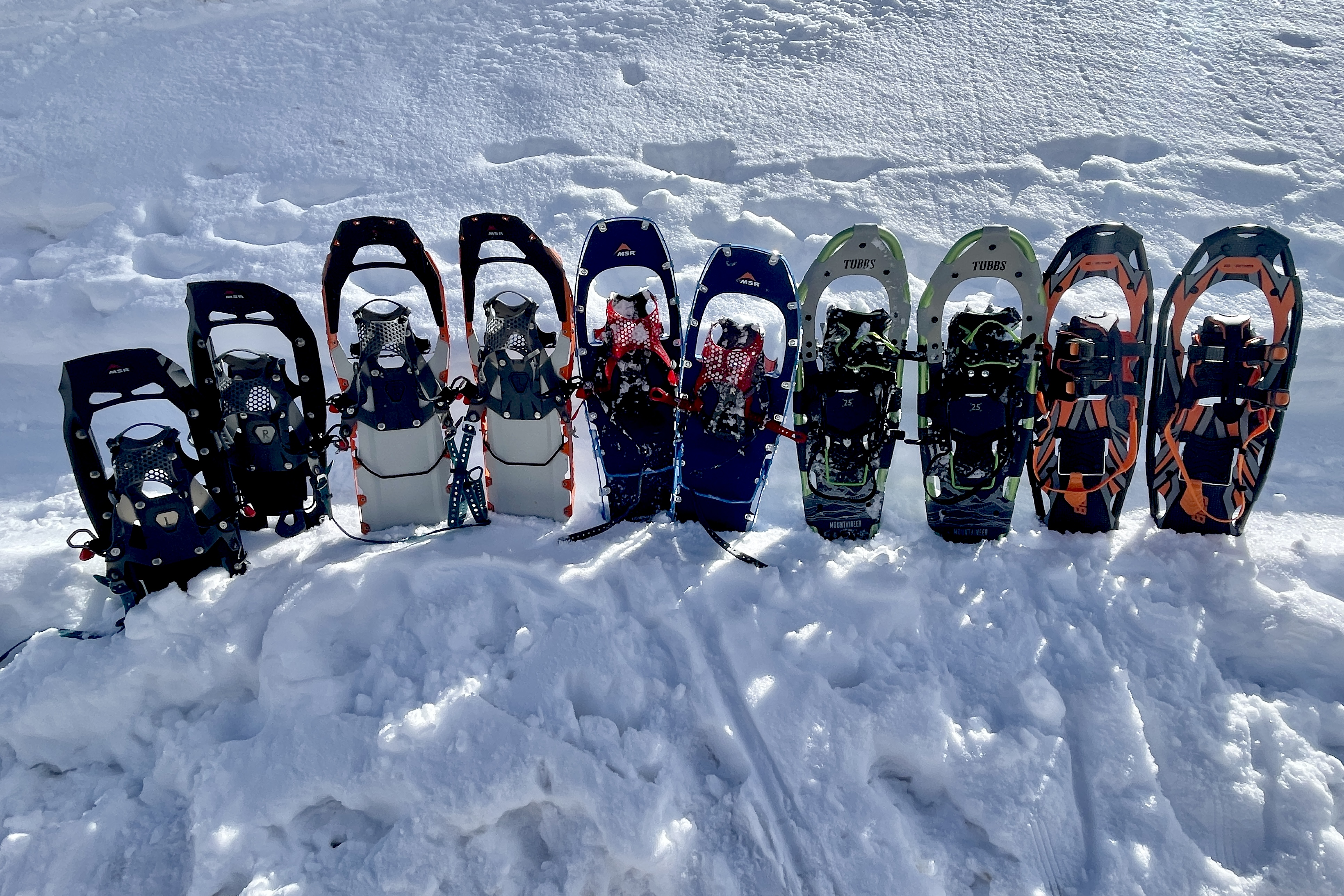
How We Tested the Best Snowshoes
Our Testing Grounds & Process
Snowshoes are a convenient and accessible way to travel across snow, whether you’re breaking trail to the fishing hut or just to the mailbox. They can also be essential tools for winter ascents in the mountains, and serious mountaineers will want the lightest and the best for their pursuits.
From recreational snowshoers who want to be able to go out for a snowy jaunt, to those adventure-seekers who want to break trail up steep slopes covered in thick powder, there is a pair for everyone. With that in mind, we considered sizing and comfort, binding systems, flotation, and traction to best assess the important qualities of each model.
We spent a few winter seasons tromping around in powder and hardpack in these snowshoes. During this time, we were able to compare notes and swap snowshoes for side-by-side comparisons. In addition, we tested each of these products in the terrain of our hometowns, making sure to evaluate their performance on fresh, deep powder to more moderate coverage, up steep hills, and on snowy trails to come up with our best assessments.
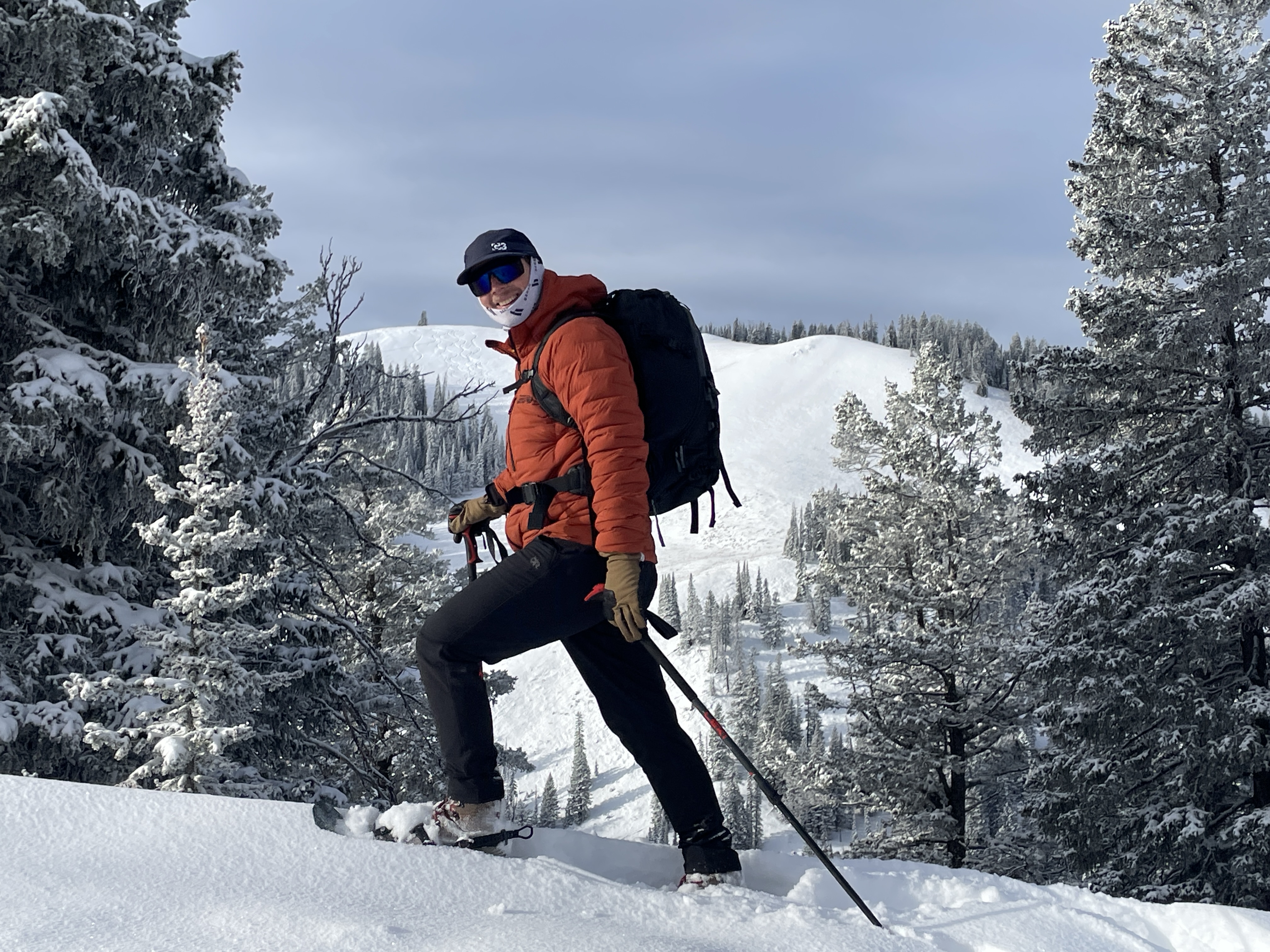
Our Expert Testers
Coloradan Sean McCoy, along with Chris Kassar and Ryan Kempfer from snowy Wyoming and Miya Tsudome from the slopes of the Sierra Nevada, have hiked miles in these snowshoes over flat and steep terrain, noting the pros and cons of each and which models stood out in our testing metrics.
Our team has been testing snowshoes since 2018, keeping an eye on new emerging designs and reevaluating our old favorites when they receive design updates. Be sure to check out our guides about Winter Boots and Winter Hiking Boots for the perfect footwear to pair with your snowshoes. To make sure you’re properly outfitted up top, check out our Guide to the Best Winter Jackets.
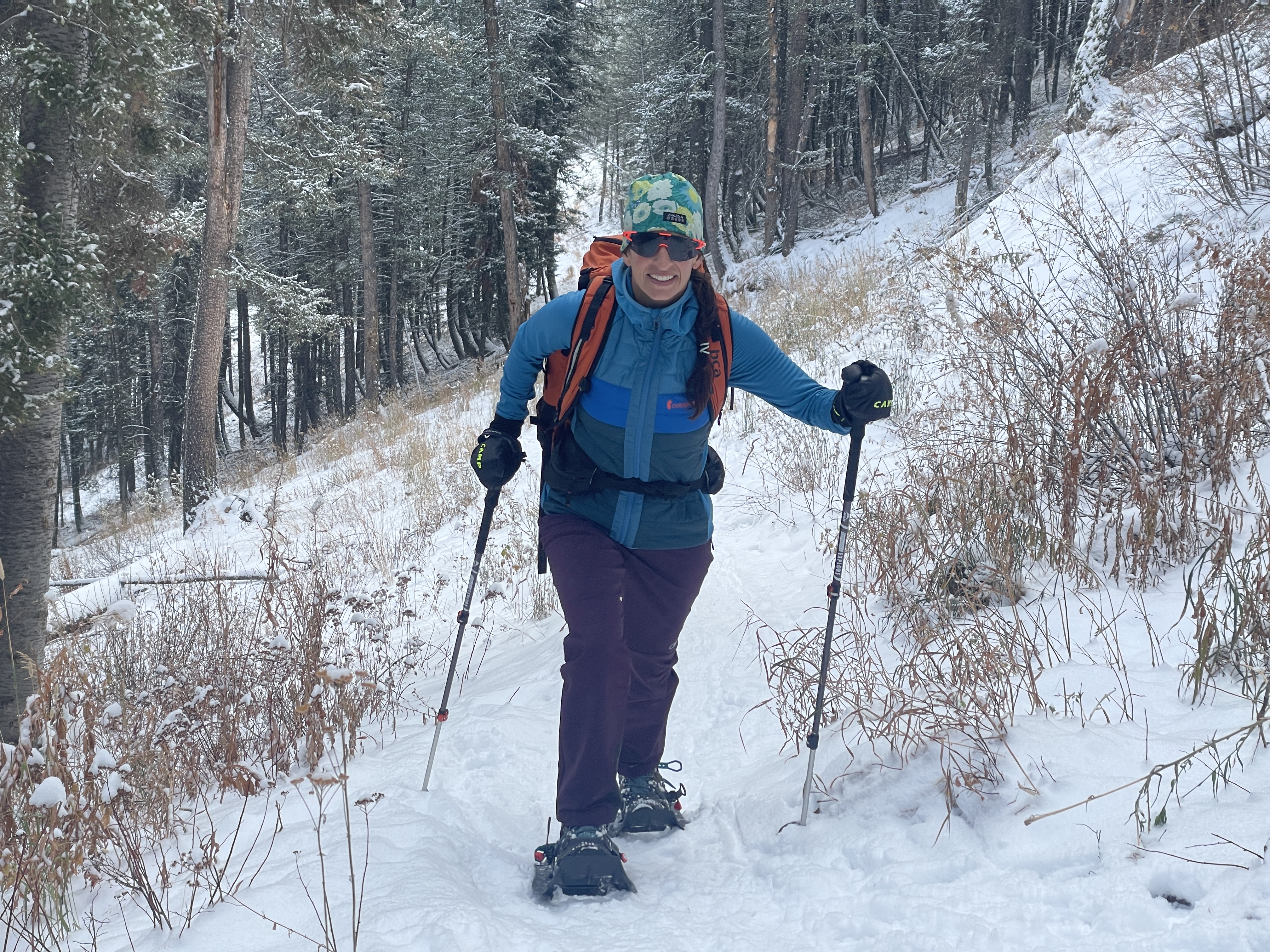
Our Snowshoe Rating System
We rated each snowshoe on four key categories that matter most in the backcountry. Flotation measures how well a snowshoe stays on top of deep or soft snow. Traction looks at grip and security on packed trails, ice, and uneven ground. Our Bindings score measures how secure the fit is, how comfortable it feels, and how easy it is to use. Stride Efficiency/Walkability reflects how naturally and comfortably the snowshoe allows you to walk. Each category is scored on a 1–10 scale to highlight strengths and weaknesses.
Note: Our Overall Rating is not an average of these numbers, but a separate assessment of the snowshoe’s complete performance, balancing both the pros and the cons.
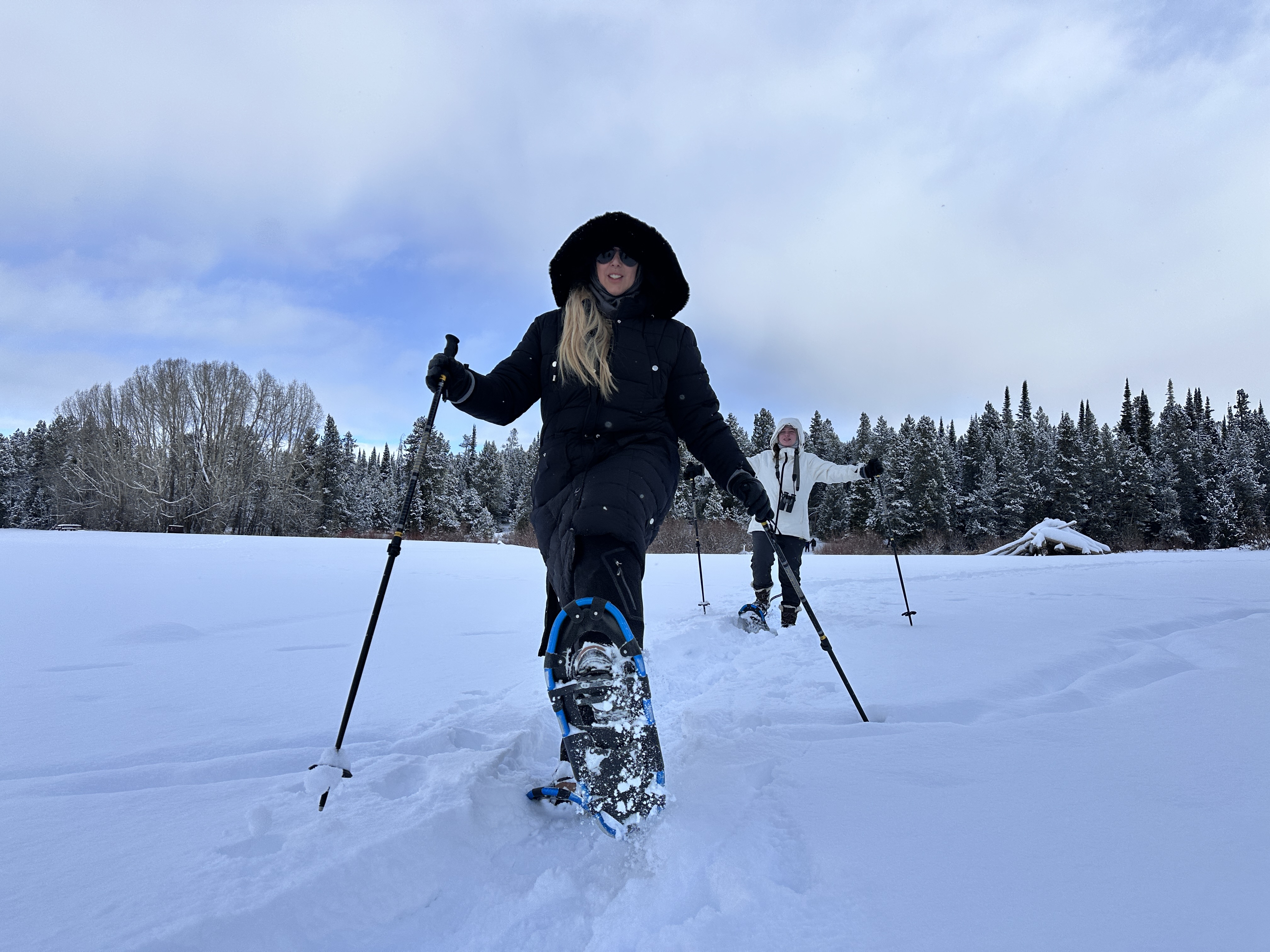
Buyer’s Guide: How to Choose the Best Snowshoes
When deciding what snowshoes best suit your lifestyle, there are plenty of things to keep in mind. This buyer’s guide includes all the information you will need to identify the right pair.
Sizing
For proper snowshoe sizing, you need to consider both the maximum load on your snowshoes (your body weight plus the gear you’re carrying) and the type of terrain you’ll be navigating.
Check the specs of the snowshoes. They will list a “maximum recommended load” and the recommended type of terrain. If you’re only taking day trips, the max load should be around 20 pounds above your body weight. For overnight trips or mountaineering, it would be 30-60 pounds more than your body weight to accommodate your pack.
For the length, a longer snowshoe makes it easier to travel through powder because there’s a larger surface area. However, a longer snowshoe is more challenging to take up and down steep terrain. If you expect to travel on hard-packed snow in mostly flat terrain, a shorter snowshoe will do just fine.
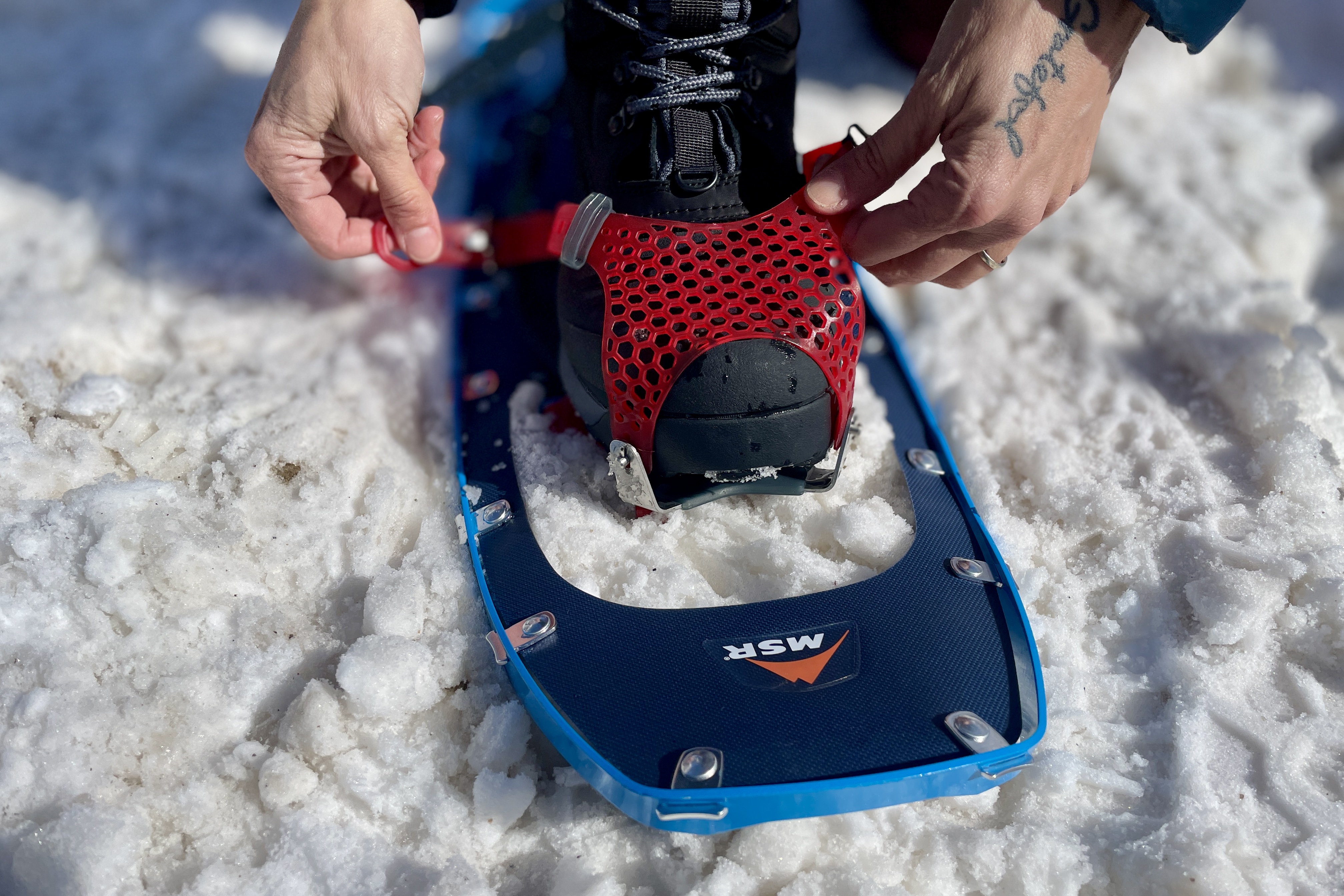
Bindings
Snowshoe bindings come in several different shapes and sizes. Finding the right snowshoe is just as much about the binding as it is about the frame. Most snowshoe binding systems are rotating or pivoting models, meaning they move separately from the snowshoe’s frame. This allows you to shed snow, making climbing easier.
Running snowshoes tend to be fixed-design shoes, with the shoe affixed completely underfoot. This reduces flapping and mimics a natural stride.
Fixed snowshoes are also a good choice if you’re primarily walking on flat ground where you don’t require a heel lift. The type of terrain you plan on walking in and the type of snowshoeing (or running) you intend to do will dictate which type of binding is the right choice for you.
Snowshoe bindings also feature a variety of strap systems. From ratchet straps as found on the Retrospec Drifter, mesh baskets with rubber pull straps found on the Atlas Access Snowshoes, or the fancy Boa closure system found on the Tubbs Wayfinder.
MSR has several different bindings depending on which snowshoe you choose, but all of its bindings are easy to use, intuitive, and recently improved. We particularly like the Paradigm binding found on the MSR Revo Explore snowshoes; here’s more information on it.
The Boa closure system and mesh strap design, which are showcased in the MSR Revo Explore, distribute pressure more evenly across your boot, creating a more comfortable fit. Ratchet straps are easy to fasten, but could cause some pressure points where they sit across your boot.
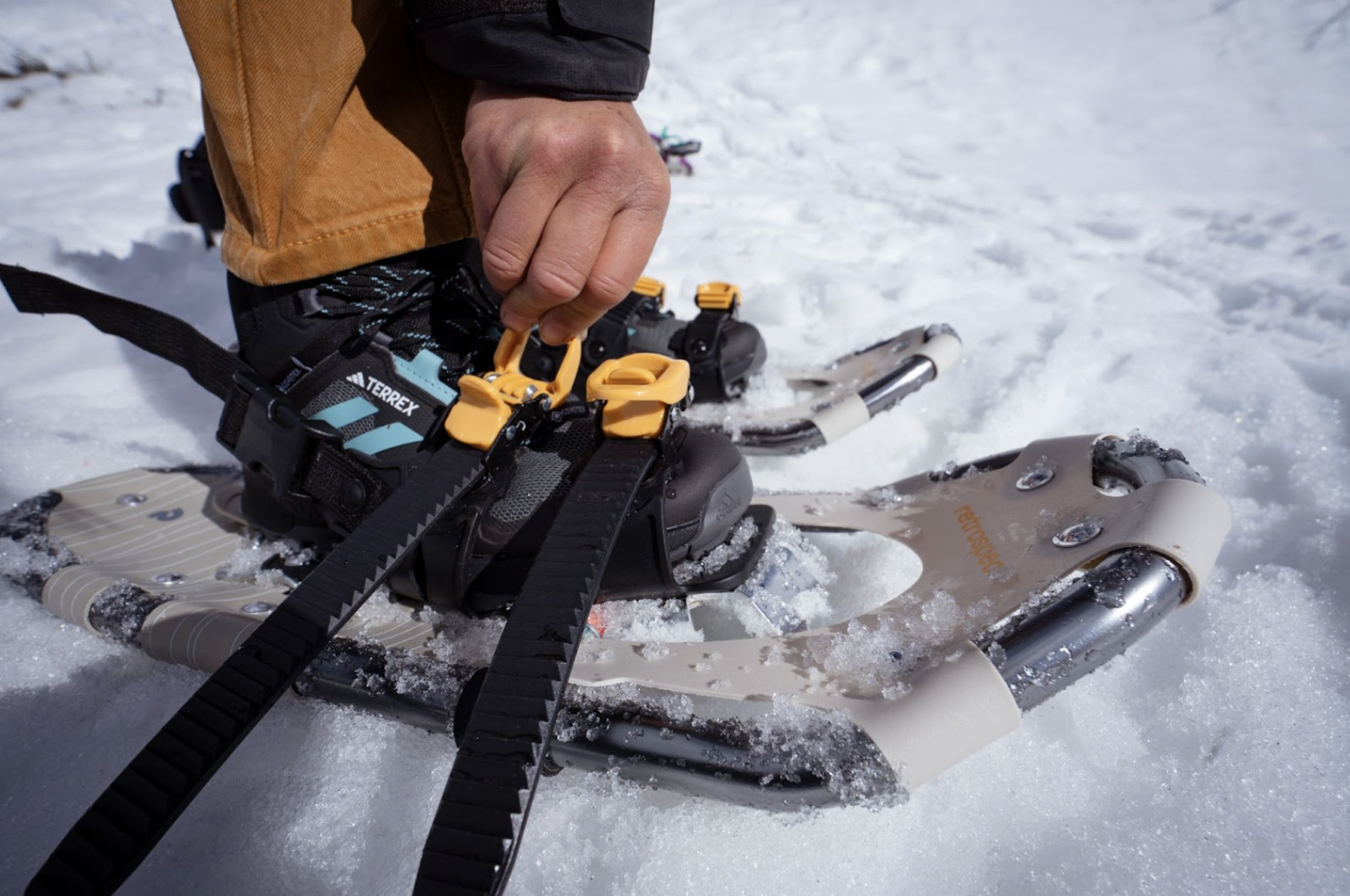
The pull webbing and the BOA cable lace bindings both provide a snug and secure fit and a quick and easy in and out of your snowshoes. (Snowshoes are also made of different materials, but the most common are made of hardened plastic with carbon, steel, or aluminum.)
Figuring out how to best attach your snowshoes can sometimes be tricky, and it’s recommended to try it inside with warm hands first, as things quickly get harder to do in inches of snow with cold fingers, or while wearing mittens.
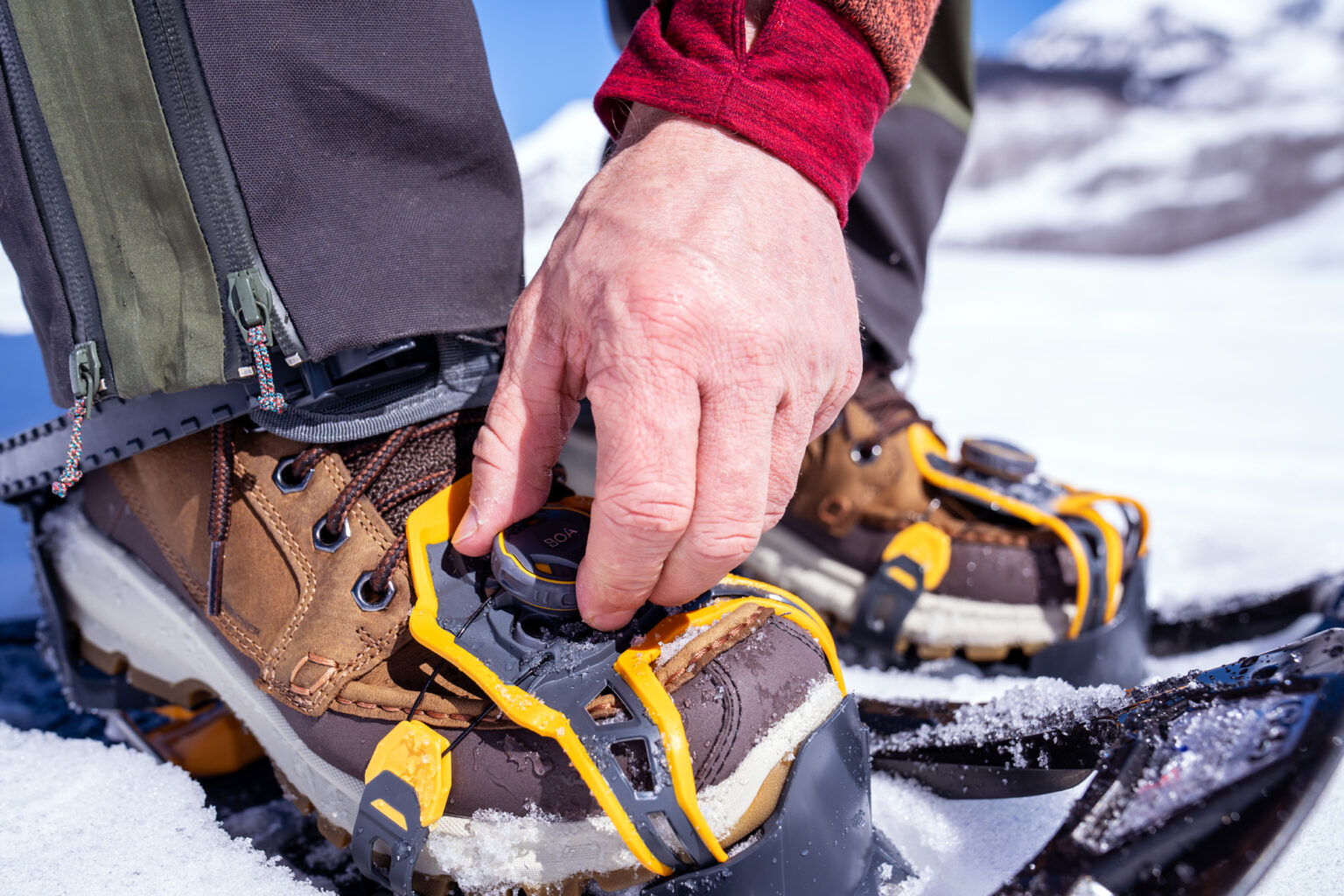
Flotation
Snow flotation refers to the snowshoe’s ability to support and distribute the wearer’s weight. Several factors influence flotation, such as the snowshoe’s size, shape, and material, the type of snow, and, of course, the user’s weight.
Snowshoes with smaller, narrower decks, like the MSR Lightning Ascent or the Atlas Range Trail, have less surface area with which to distribute weight, causing them to be more suitable for moderate snowpack. Though they will perform perfectly fine in deep powder, you will sink more than if you were wearing a bigger shoe.
You’ll notice that snowshoes such as the Tubbs Wayfinder and Tubbs Mountaineer have a more traditional tennis racket shape. These snowshoes’ wide, round forefoot, combined with the rounded aluminum frame and nylon deck, offer better flotation and weight distribution, especially over a thick layer of fresh powder.
The downside to these types of snowshoes is that they can be more cumbersome to maneuver, and aren’t as suitable to more technical terrain. Deciding which snowshoes will work best for you will come down to determining what you will be using them for most.
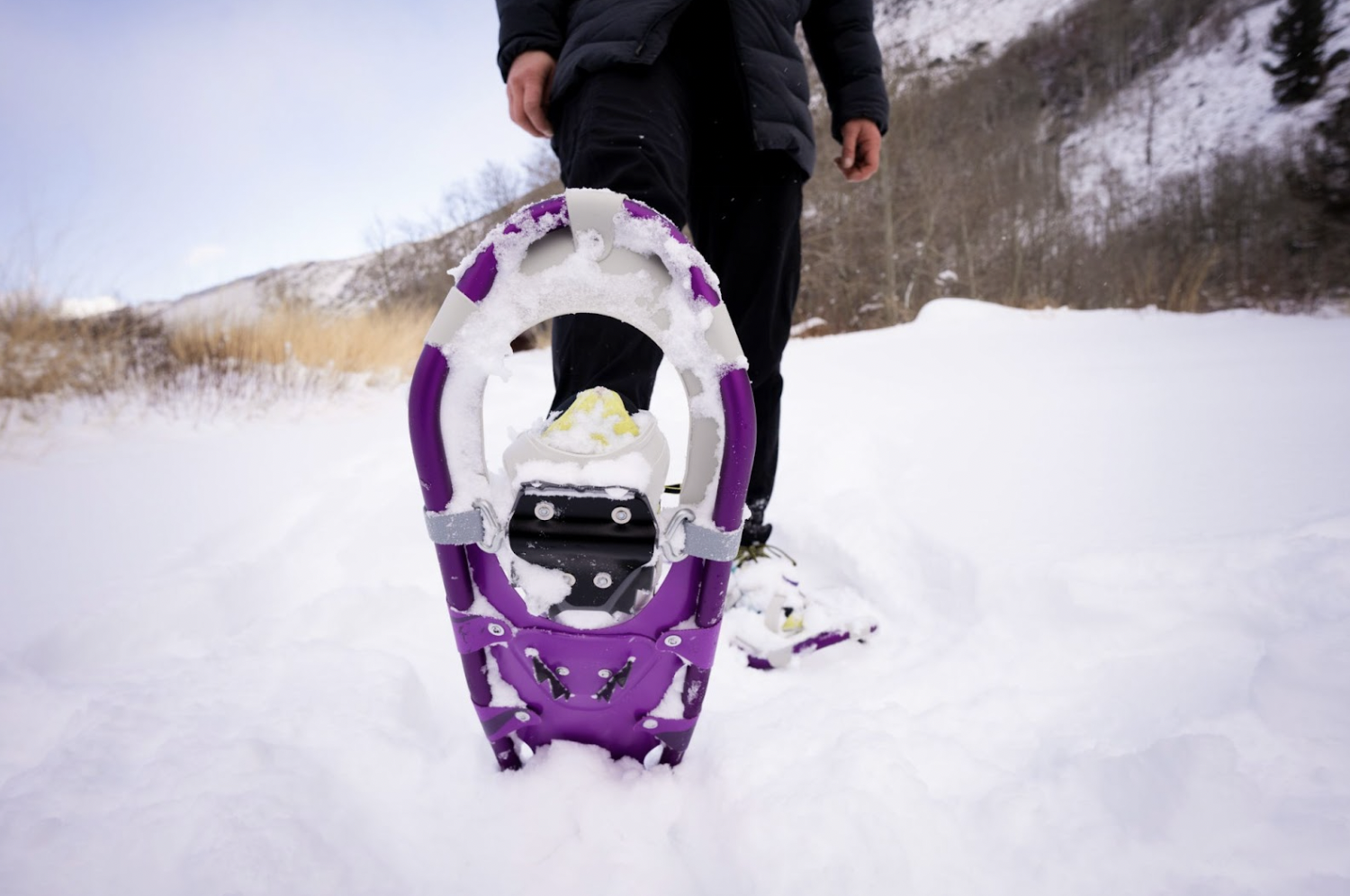
Traction
Underneath the snowshoes, you’ll see the traction, which ranges from lugs similar to a winter hiking shoe to the sharp teeth of a crampon for mountaineering. Running snowshoes are mostly foam and rubber with a few metal studs for traction. Others will have steel crampons underfoot (toe and heel), which will help provide stability, though they are not as secure as mountaineering crampons.
The Crescent Moon EVA Snowshoes are an exception here, employing six ice spikes for additional traction. While these can’t compete with crampons in terms of bite, they’ll keep you on your feet during jaunts on flat terrain, and their simplicity can’t be beat.

The MSR Lightning Ascent, MSR Revo Explore, and Atlas Range Trail snowshoes all feature serrated edges on the side railings of their lightweight aluminum frames, in addition to steel crampons. The Lightning Ascent also has two steel serrated bars that span the width of the shoe from edge to edge, providing the best traction of any shoe in our lineup.
This makes them a great choice for varying conditions, from powder to ice patches and firmer snow, and will provide more stability and support than the buoyant frames of shoes like the Tubbs Wayfinder or Retrospec Drifter.
Having traction on the side railings also allows for more security and bite when traversing on slopes, which can also be a safety concern. If you are looking to get into more technical terrain, you’ll want to opt for models with serrated frames.
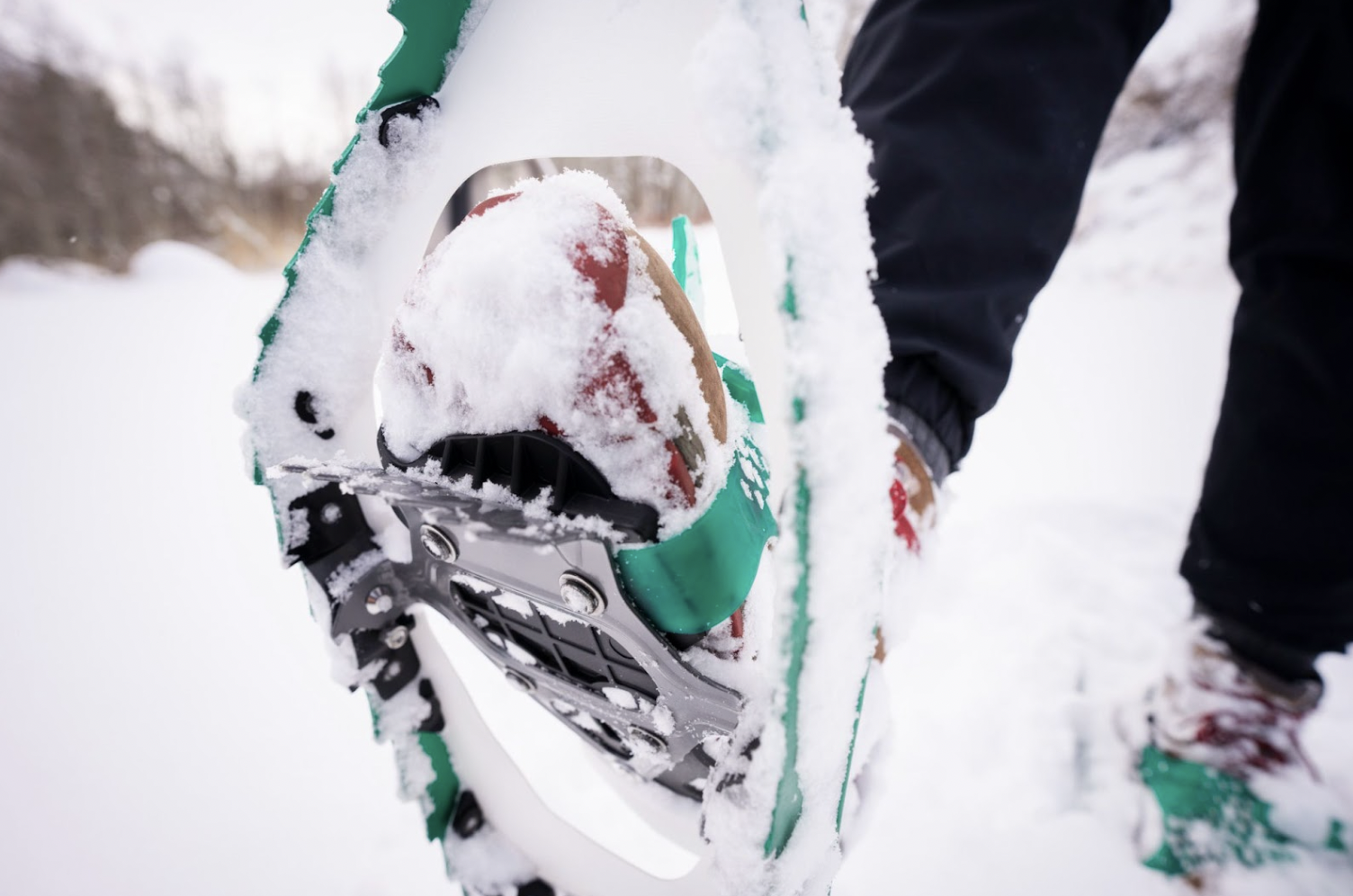
Heel Risers
Heel risers are a key feature if you plan to do any ascents up steep terrain. Trying to snowshoe uphill without heel risers will result in immediate calf fatigue. You may think that hiking sideways up an incline to create switchbacks is a solution, but trust me, this is awkward unless there’s an established flat trail of switchbacks.
Technical snowshoes like the MSR Lightning Ascent are equipped with heel risers, while lighter, less expensive models like the Crescent Moon EVA Snowshoes do without. The exception is our budget pick, the Retrospec Drifters, which do come with heel risers, which is part of the reason why they are such a great deal.
If you’re only planning to walk on flat or lightly rolling terrain with your snowshoes, such as meadows, golf courses, trails, or roads, risers aren’t totally necessary. You’ll be fine with snowshoes that prioritize flotation, like the MSR Evo Trail or Tubbs Wayfinders.
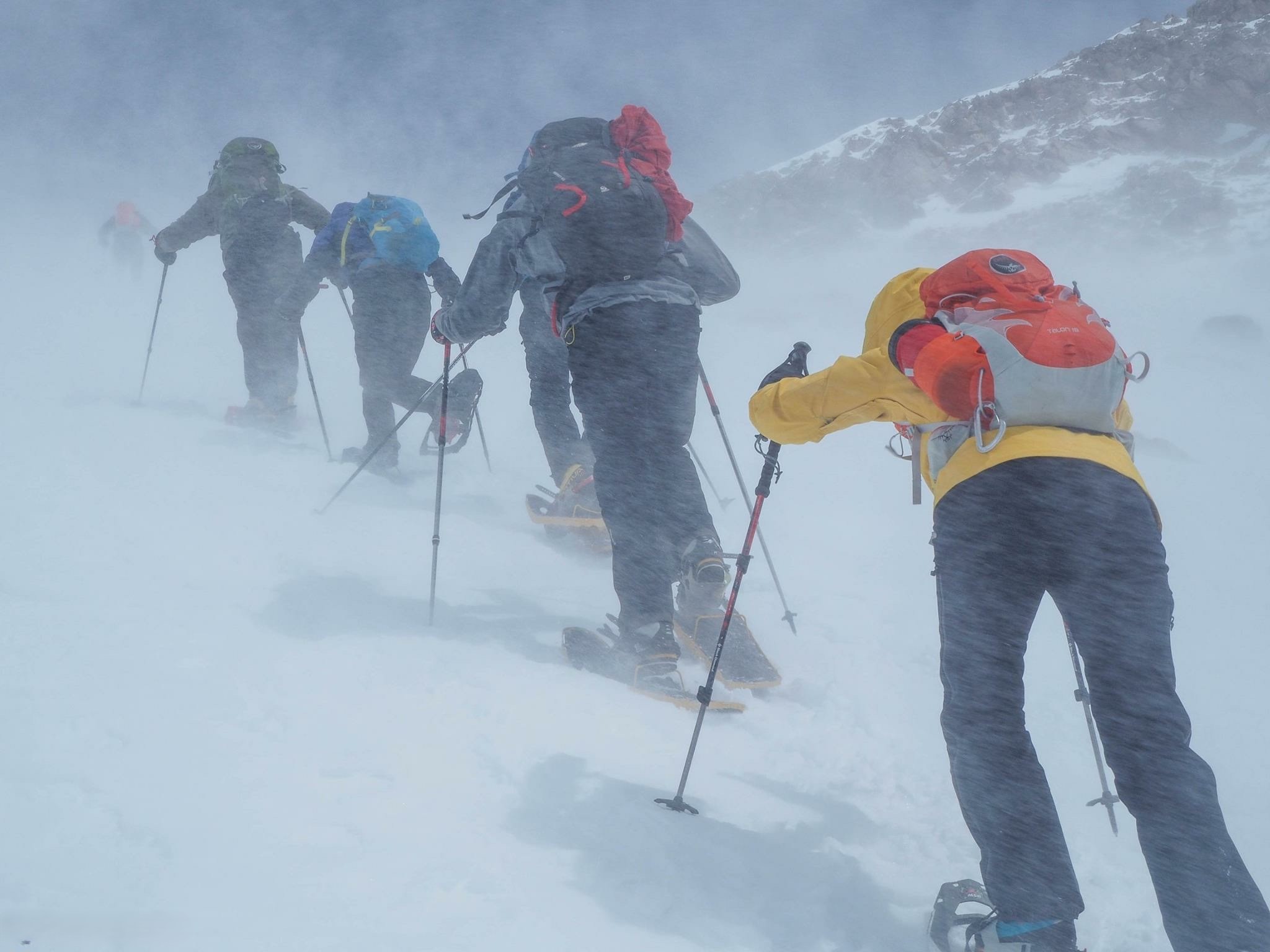
Poles
Snowshoeing without poles is possible but awkward, especially when traveling through deep powder or on a steep incline. The most important feature of snowshoe poles is the basket — the circular piece about 2 inches above the spike that stabs into the ground. Many trekking poles used for hiking come with baskets, but they’re often not made for light, fluffy, thick snow.
Ski poles will have a large enough basket, but the poles you use to ski may not be the correct height for snowshoeing. The best option is to purchase trekking poles for use while hiking or backpacking. You can also purchase the additional snow basket to swap onto the pole during the winter.
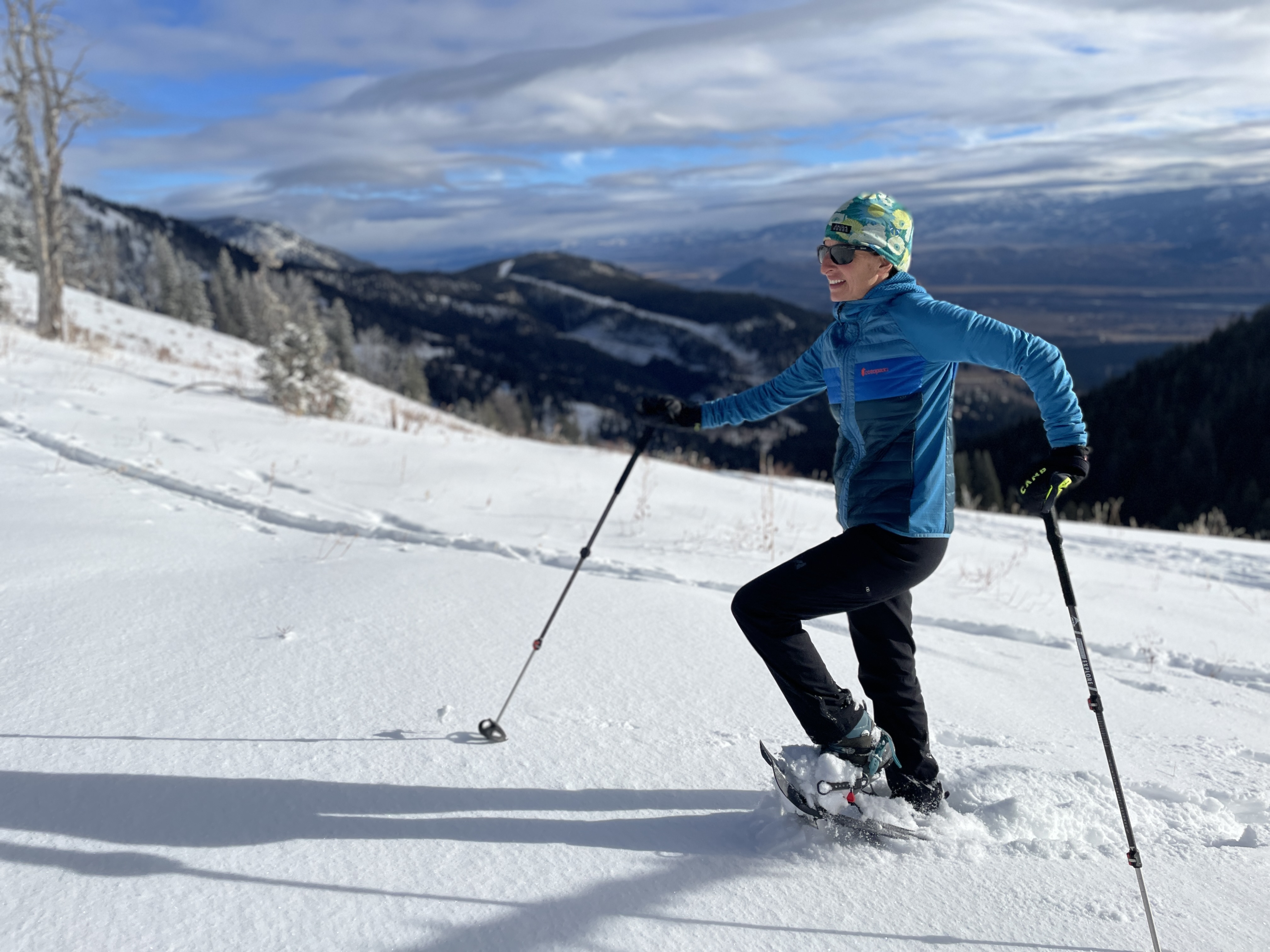
Price & Value
Although you could spend $30 on a pair at a large discount store that might perform just fine if you’re only going out once or twice a year for short distances, there are some noticeable differences in quality when you are willing to shell out a bit more cash.
Budget
While there are many sub-$100 snowshoes on the market, the Retrospec Drifters ($90) are an exceptionally good choice. They’re fully featured with crampon spikes and heel raisers to help you over rolling hills, and they come with trekking poles for stability.
They’re constructed with less expensive, heavier materials, so they’ll slow you down if you’re in it for the long haul, but for short snow jaunts, they’ll keep you floating on top of the snow. They utilize ratchet straps which don’t distribute pressure quite as well as the mesh of the MSR Lightning Ascent or a Boa system, but they’re durable and functional, so they won’t be a safety issue if you’re out a few miles from shelter and the snow really starts coming down. The G2 Go2Gether Snowshoes are another solid value option that is lightweight and easy to use, but lacks features like heel lifters and intense traction.
Mid-Tier
A frequent snowshoer will want to spend at least $200 for a good pair. In this price range, most frames are made of aluminum, and most bindings are more comfortable and well-designed than the plastic ratchet straps you’ll see on cheaper models. A couple of options from our lineup include the Tubbs Wayfinder ($200) and the Atlas Range Trail ($230).
The Atlas Range Trail is a fantastic choice that has many of the features of more expensive, technical snowshoes at a much lower cost. The Tubbs Wayfinders are great choices for the recreational snowshoer who plans to take many winter jaunts over powdery trails.
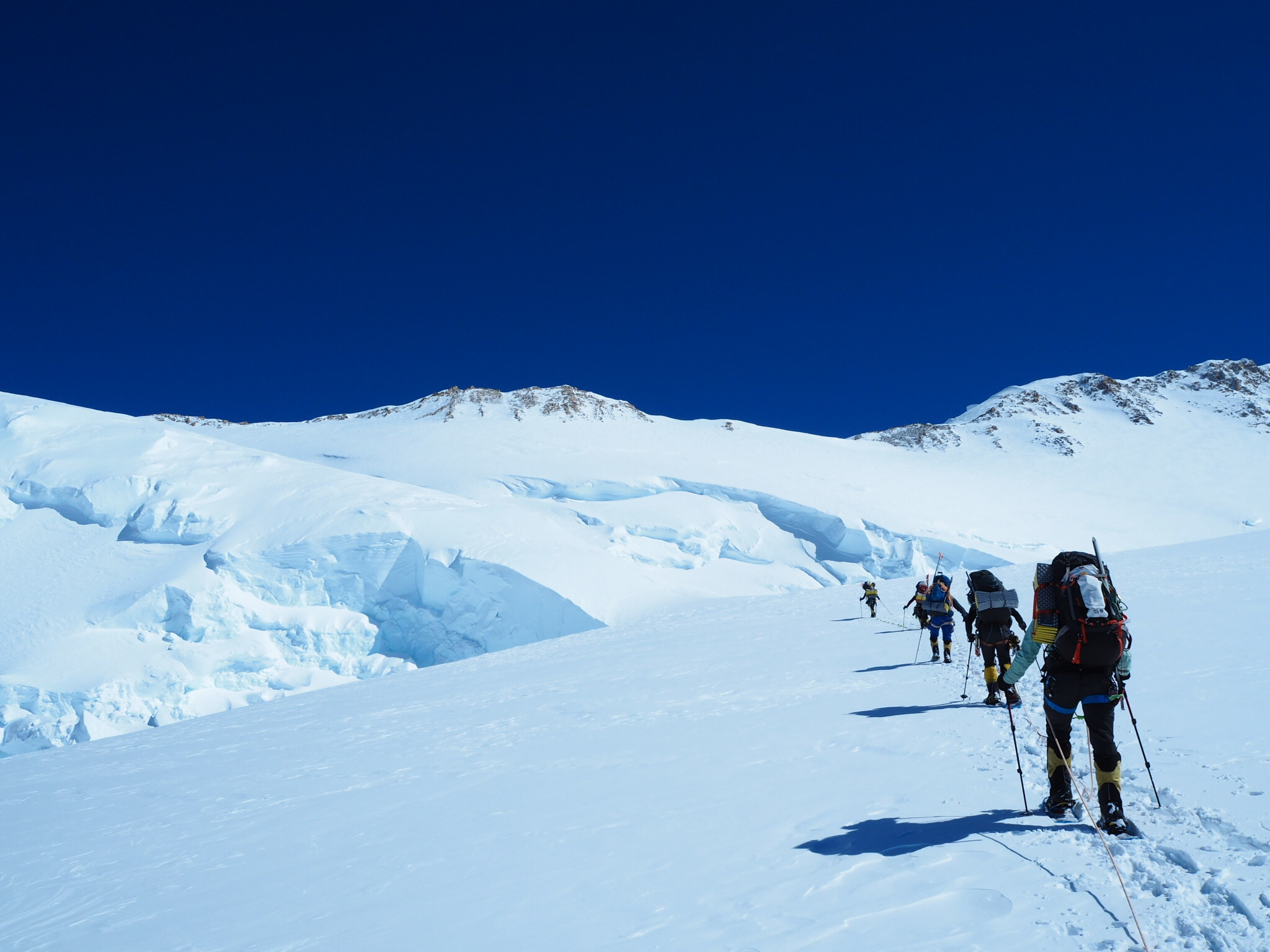
Premium
If you are looking for more specialized snowshoes, you can expect to spend upward of $250. Our top pick, the MSR Lightning Ascent, clocks in at a whopping $390. These snowshoes are the best-performing, ultralight, technical, all-terrain snowshoes you can buy, with advanced bindings and an unrivaled grip. The MSR Revo Explore ($270) snowshoes are another high-quality, versatile, premium option; they’re lightweight, comfy, easy to use, and have great traction and flotation.
Typically, the more specialized the shoe, the higher the cost. Another example is the Atlas Race shoes ($300), which are made for running in snow with its adjustable spring-loaded suspension.
If you’re reading this review, it probably means you want to spend a little money on a good pair of snowshoes to last many winters. In our opinion, the improvement in bindings and quality of materials that comes with shelling out a few hundred bucks is well worth it.
Frequently Asked Questions
The MSR Lightning Ascent with the additional 6-inch tails will provide incredible flotation in deep snow. Remember, snow is just frozen water, and we still want to stay afloat. Look for snowshoes with high flotation ratings
While you may not need poles, they are highly recommended. When starting out, snowshoes can make the most agile person rather clumsy. Using poles will help increase the balance of the upper body and engage the arms in an otherwise very leg-focused sport.
On more aggressive and technical terrain, you will need poles. They can be a lifeline when you’re near precarious ledges and want the extra layer of security
A good pair of hiking boots or winter boots are recommended for most snowshoeing situations. Look for something that will keep feet warm and dry without compromising mobility. Check out our reviews of the Best Men’s Winter Boots and Best Women’s Winter Boots for top picks.
Adding gaiters to your setup is also a good idea to keep snow out — because dry means happy.
As mentioned above, the sizing of snowshoes depends largely on your height and weight (including pack weight). Check the sizing and weight recommendations for the brand and model you’re interested in.
For the length, a longer snowshoe makes it easier to travel through powder because there’s a larger surface area. However, a longer snowshoe is more challenging to take up and down steep terrain.

